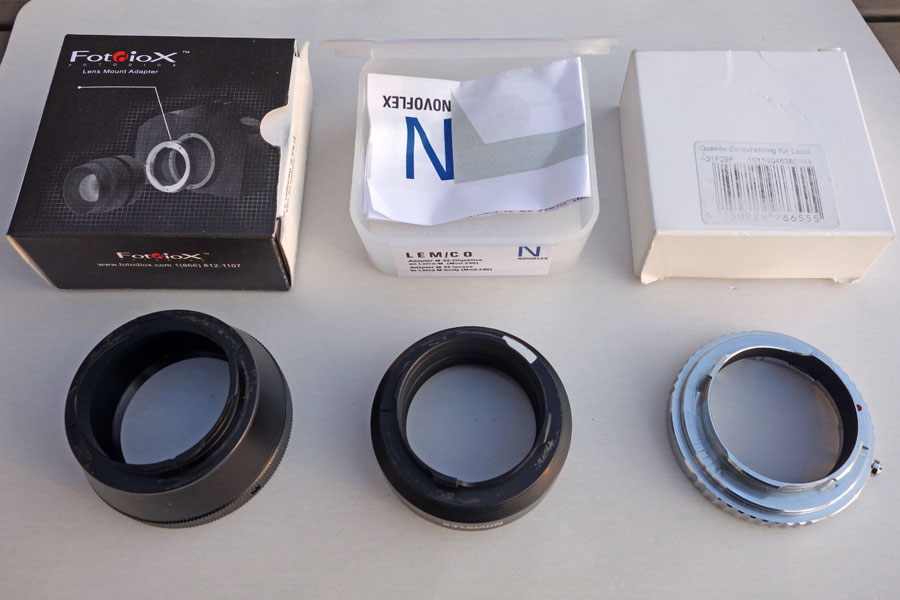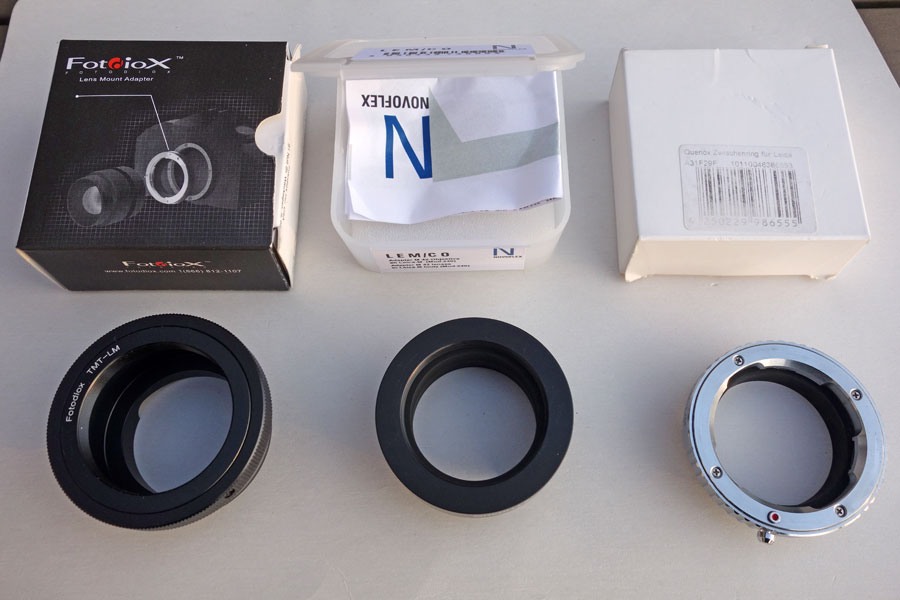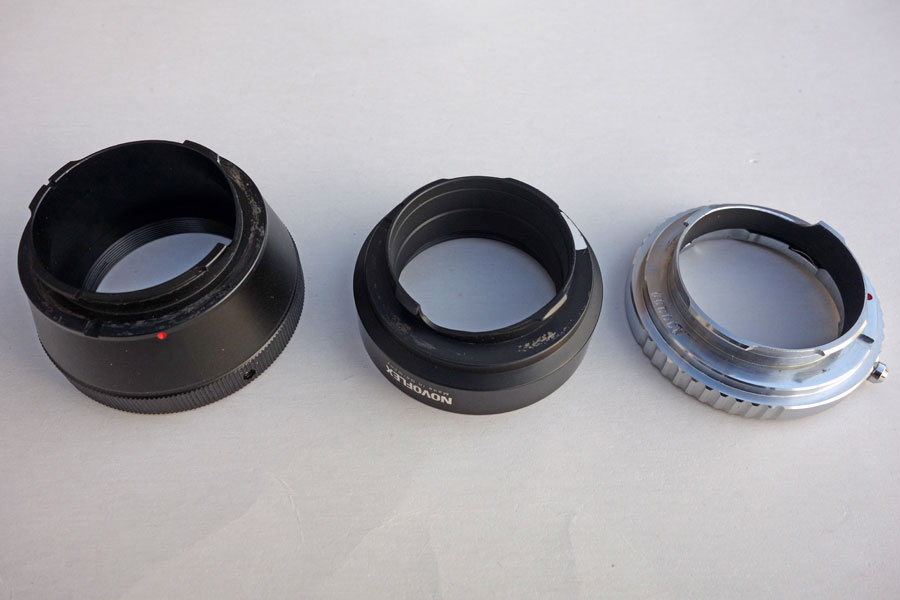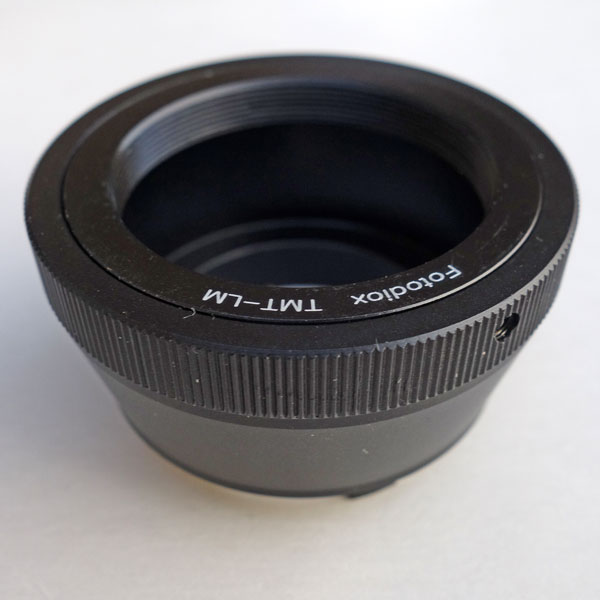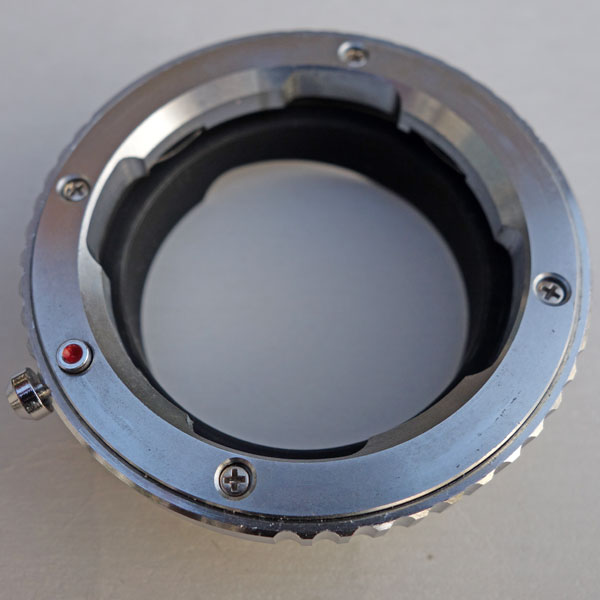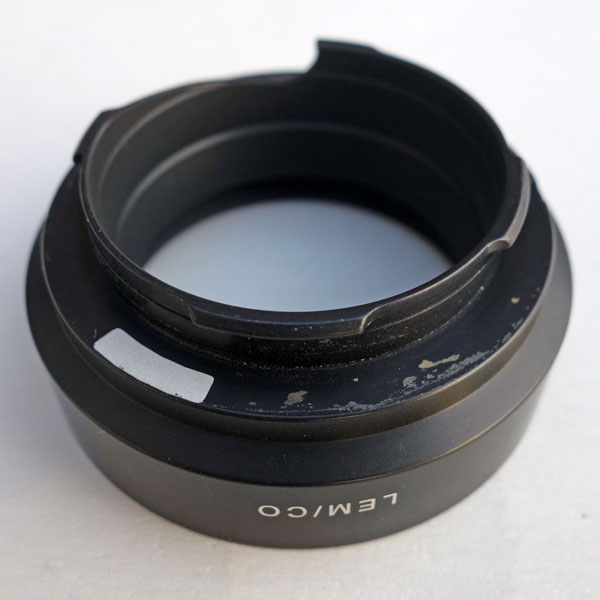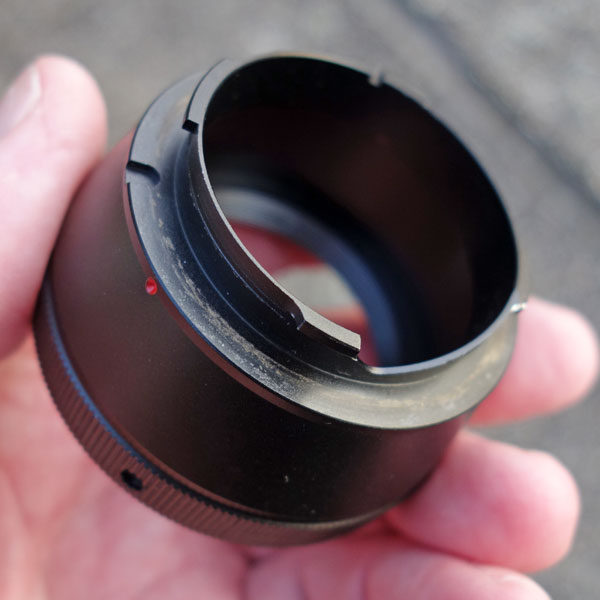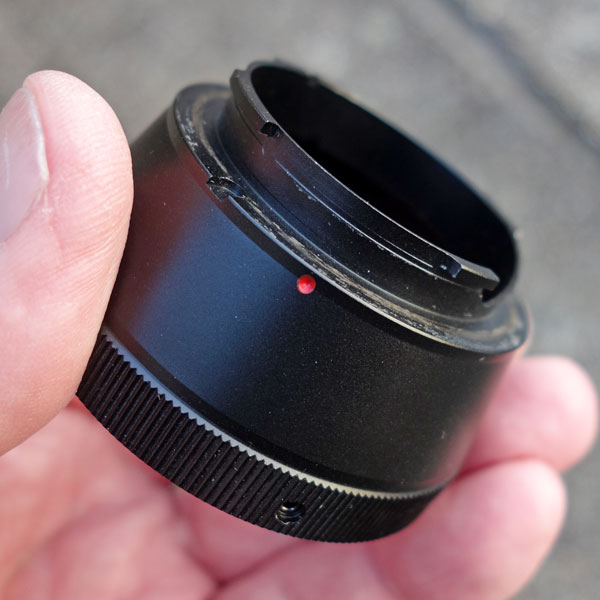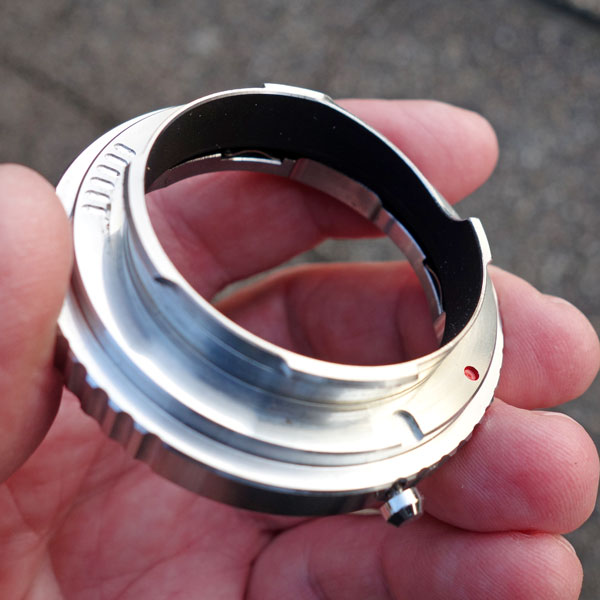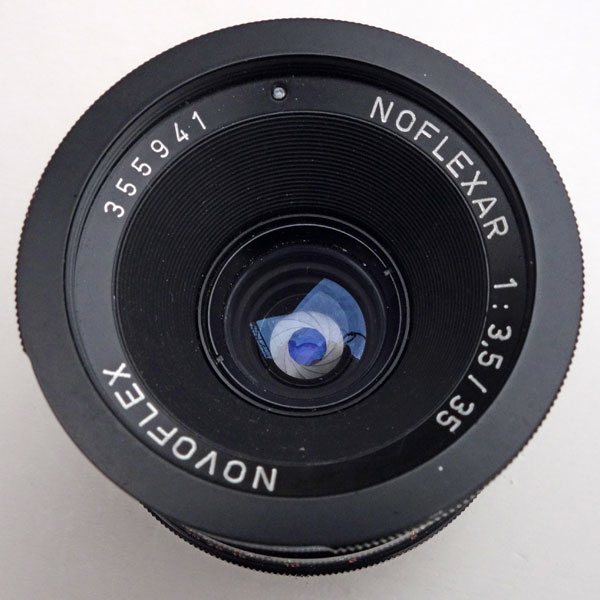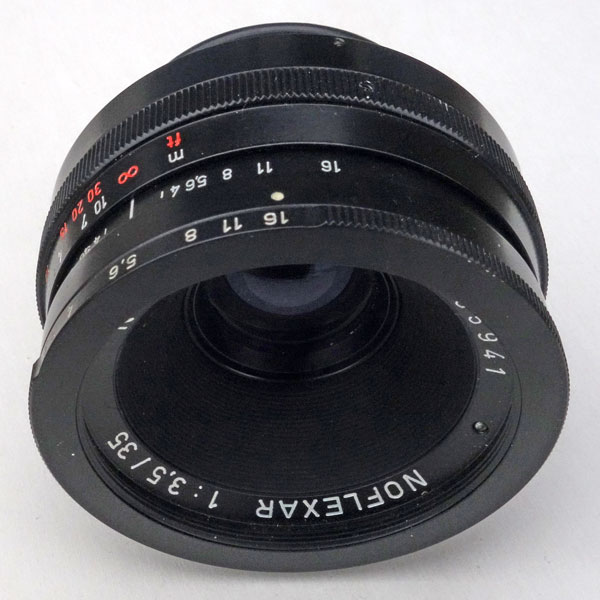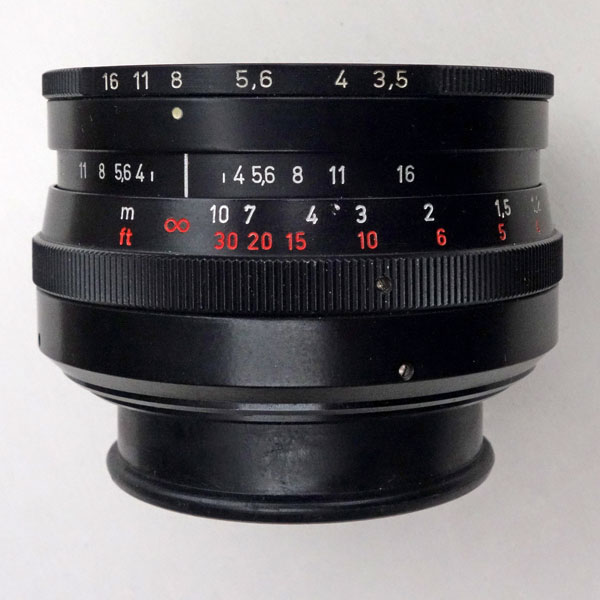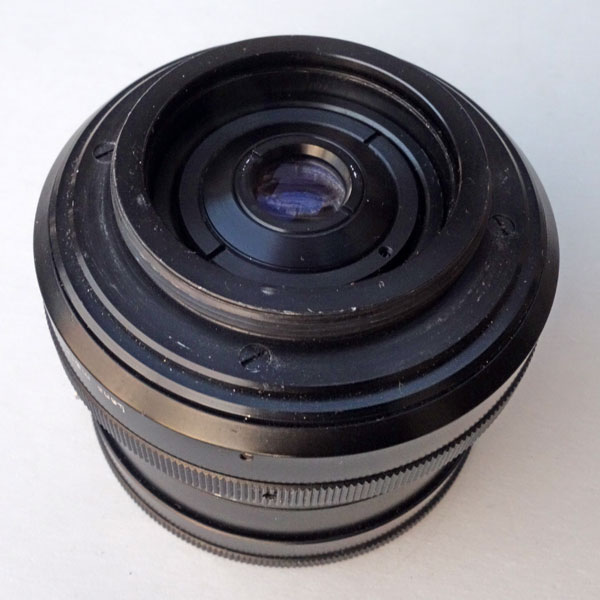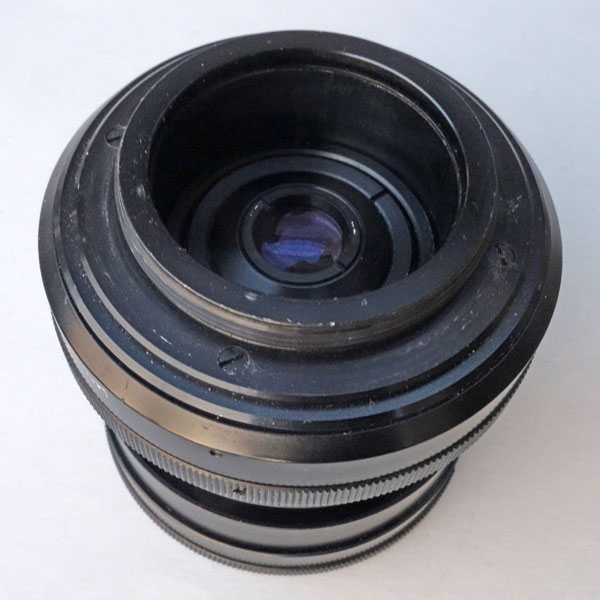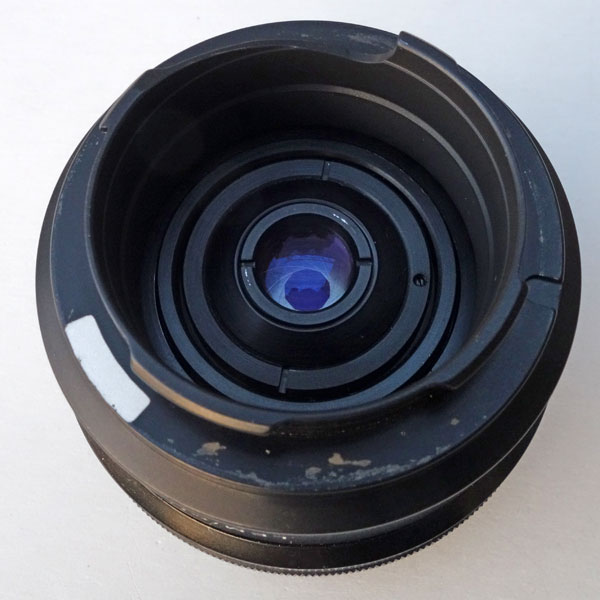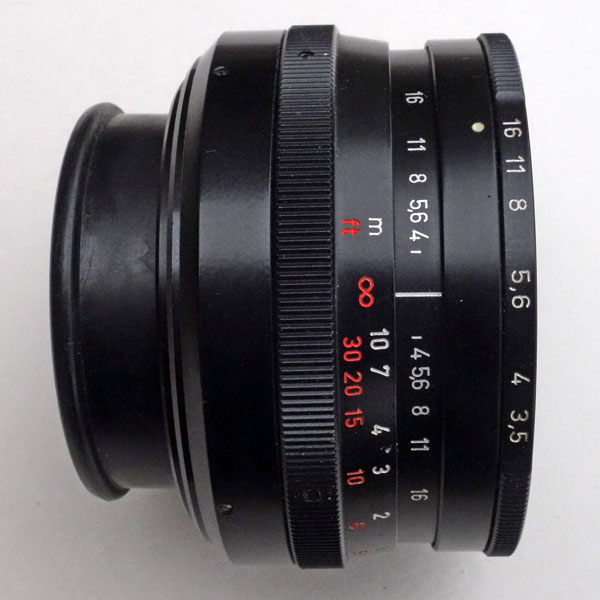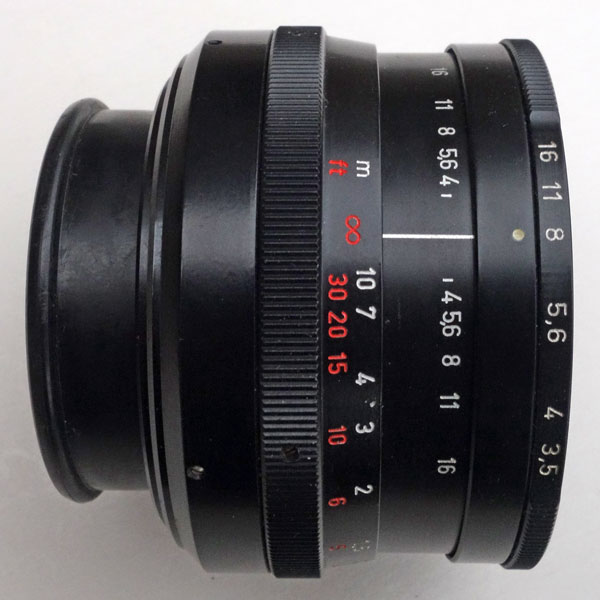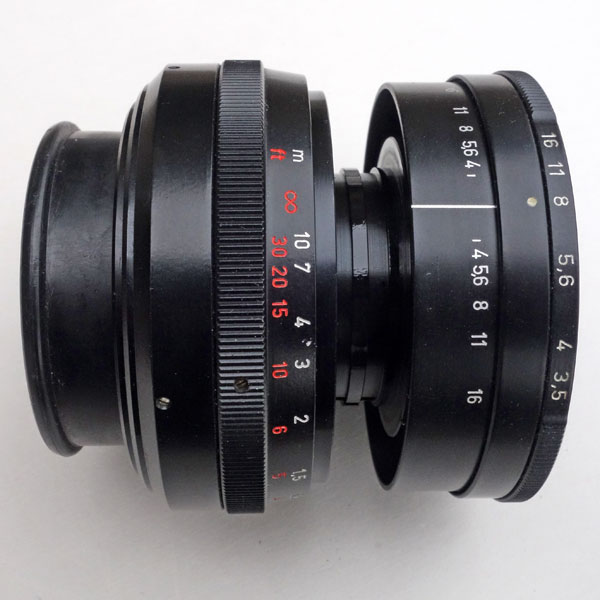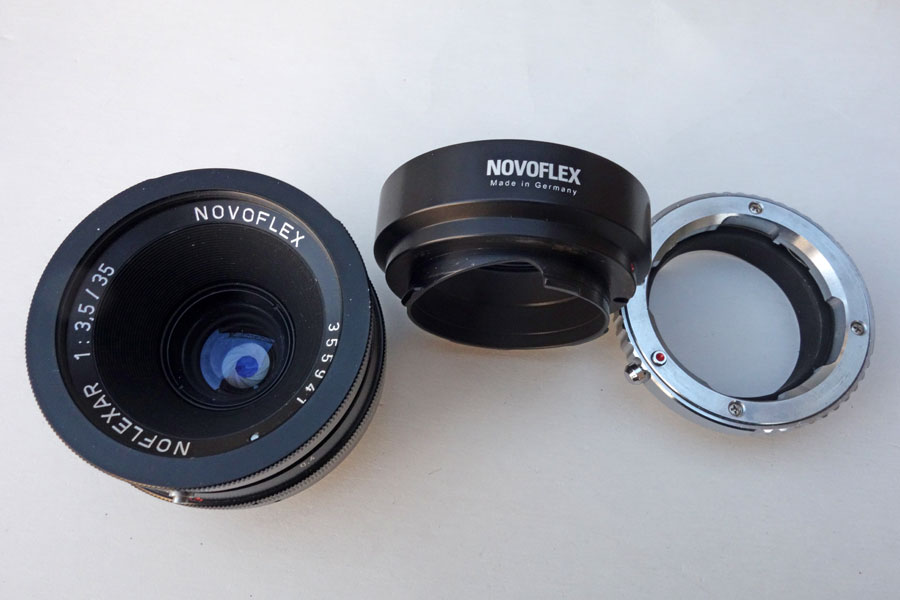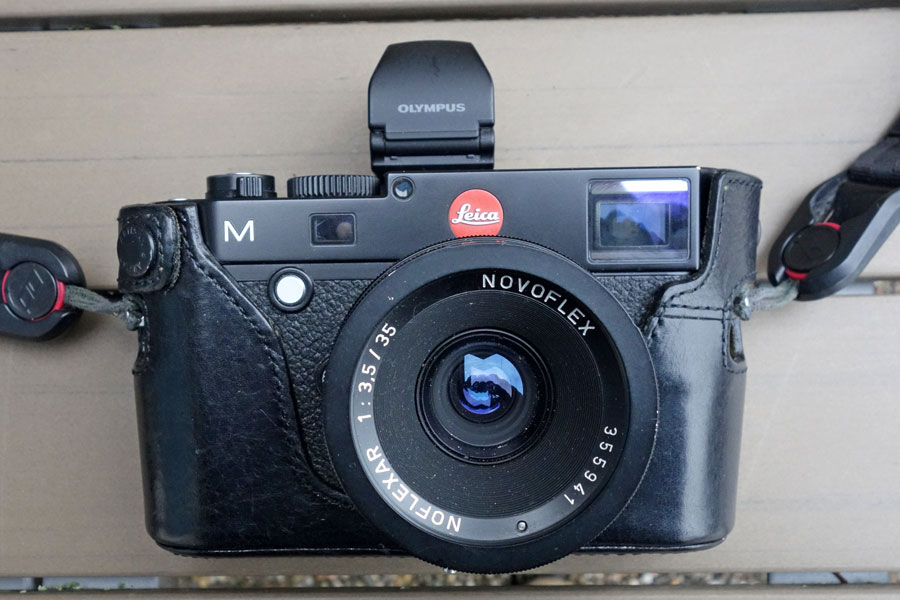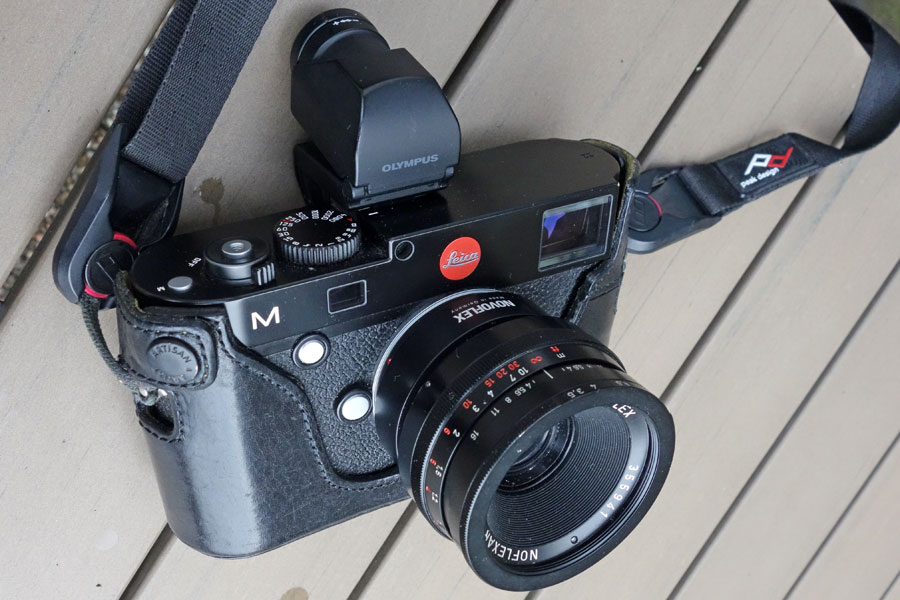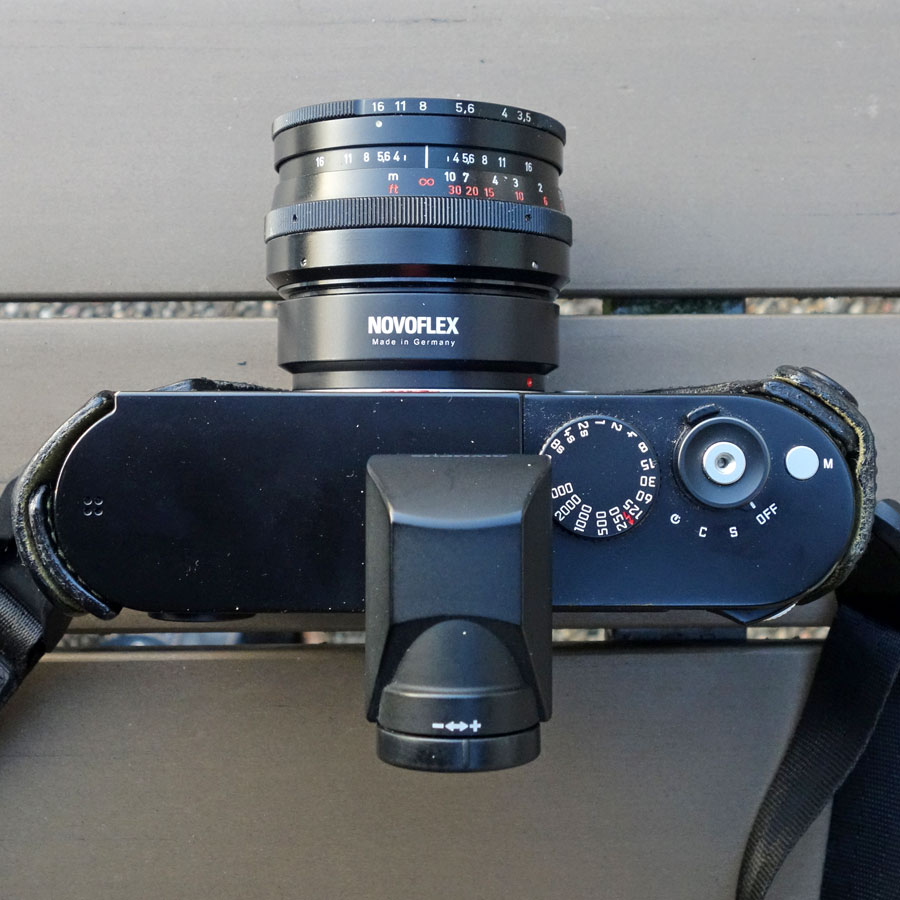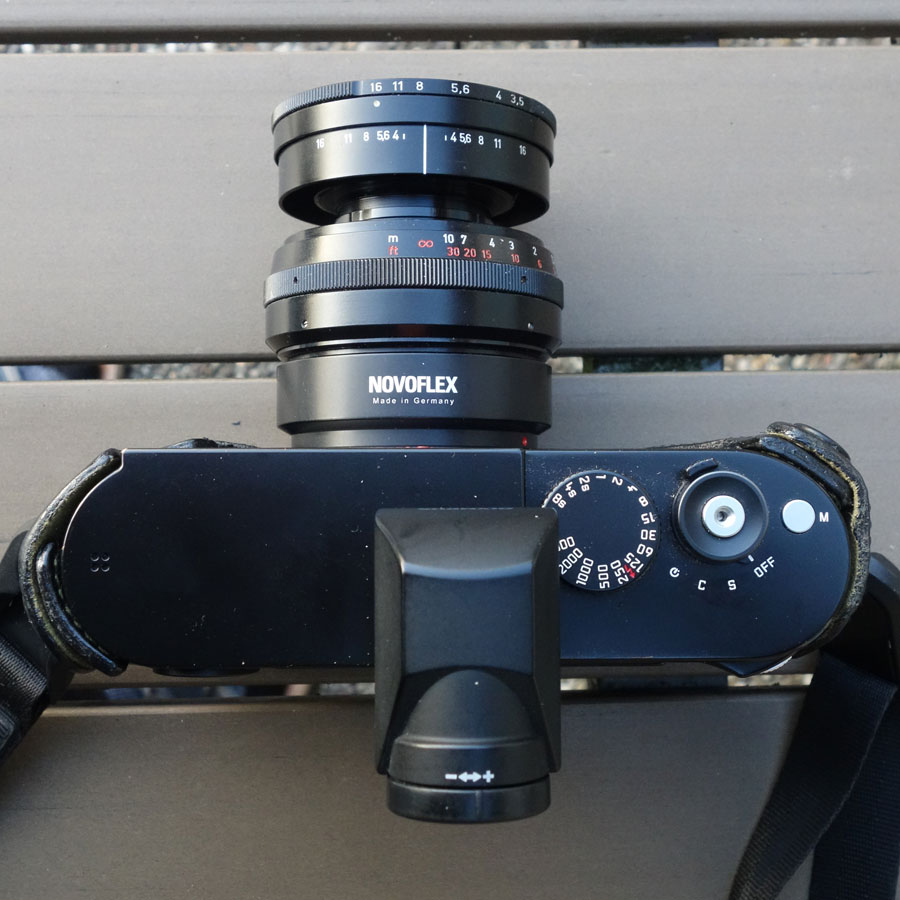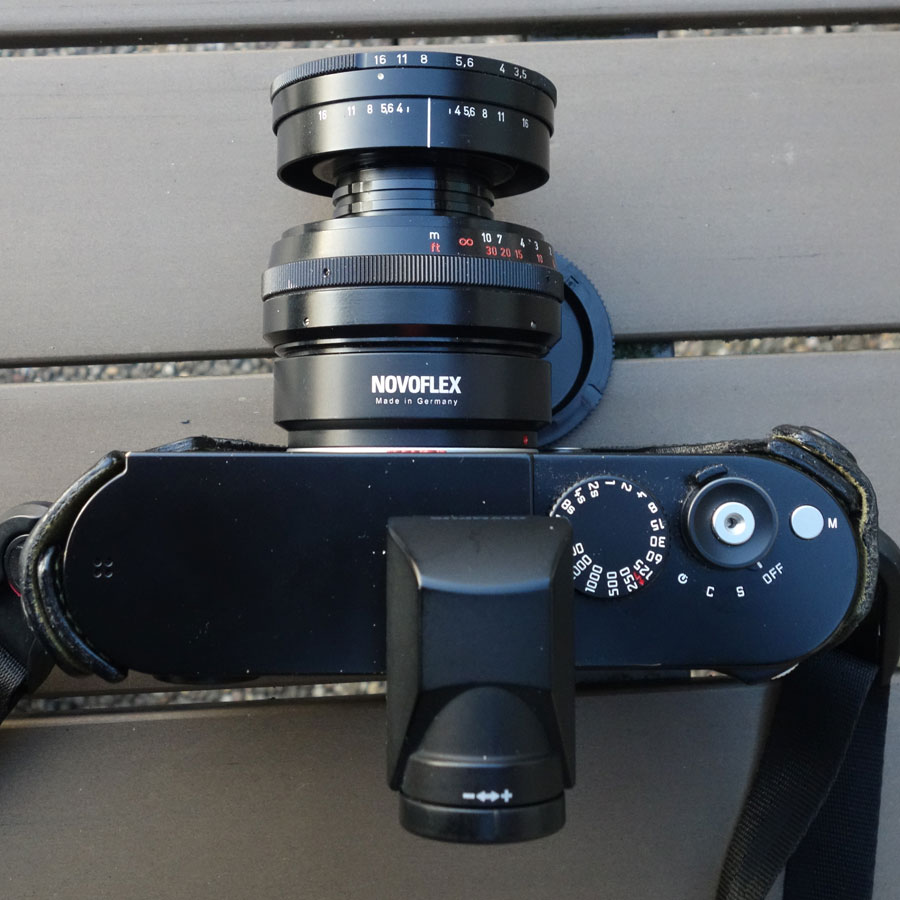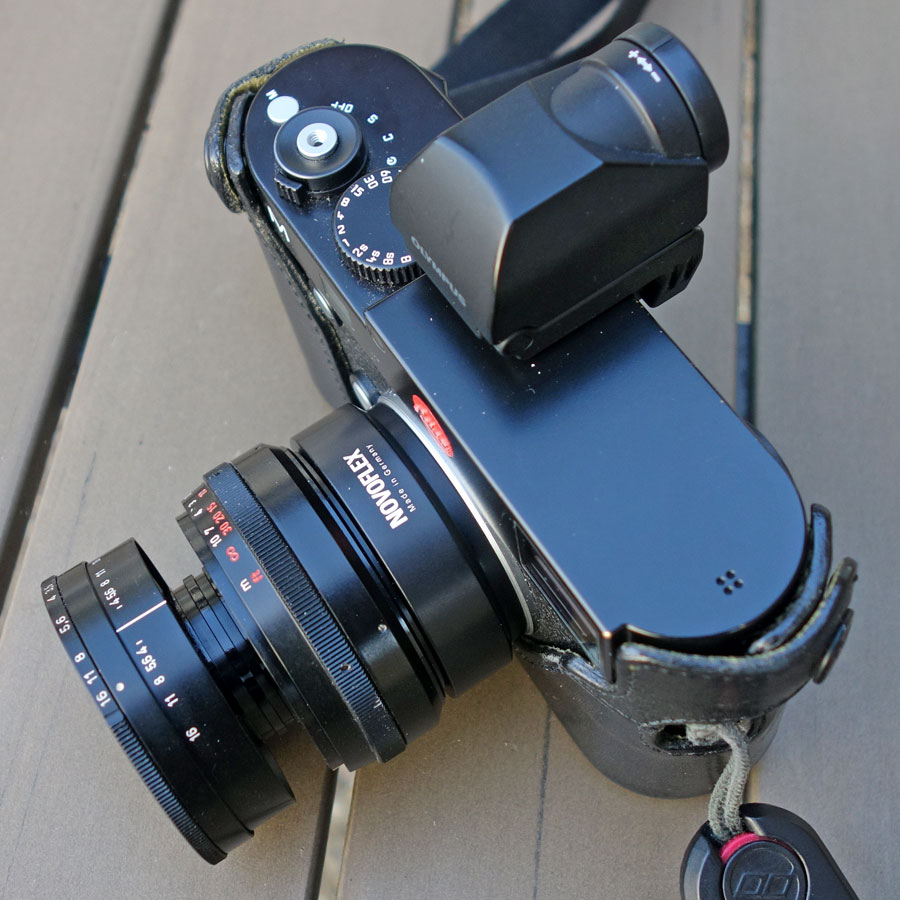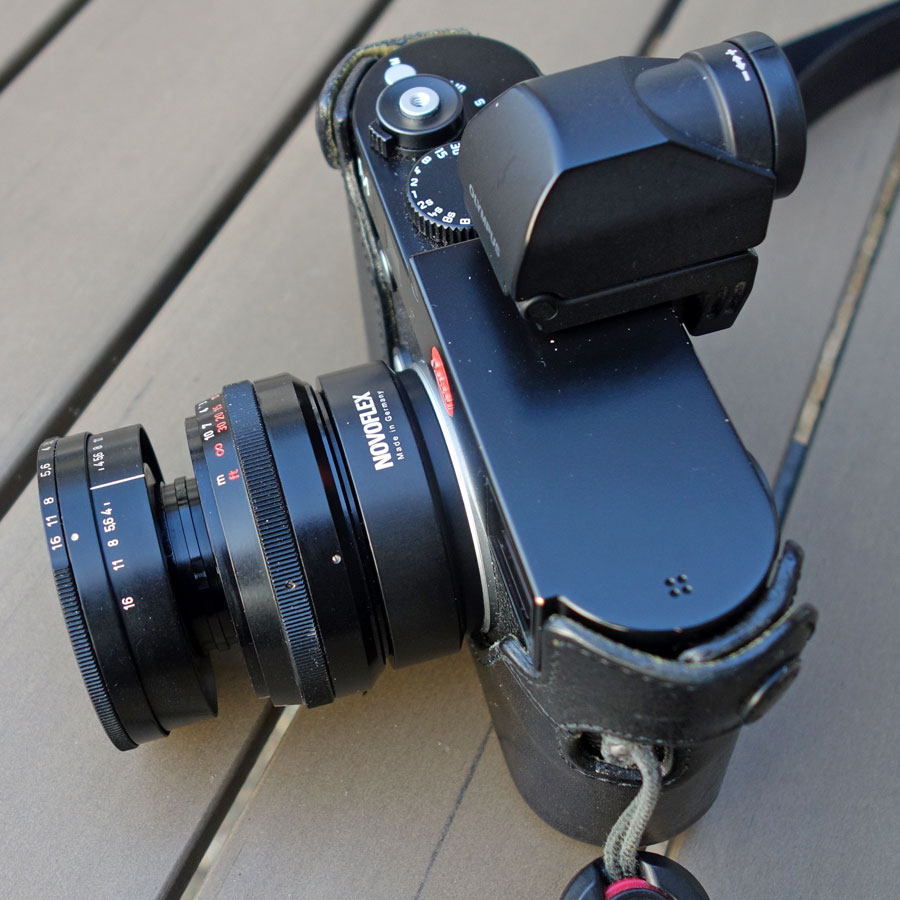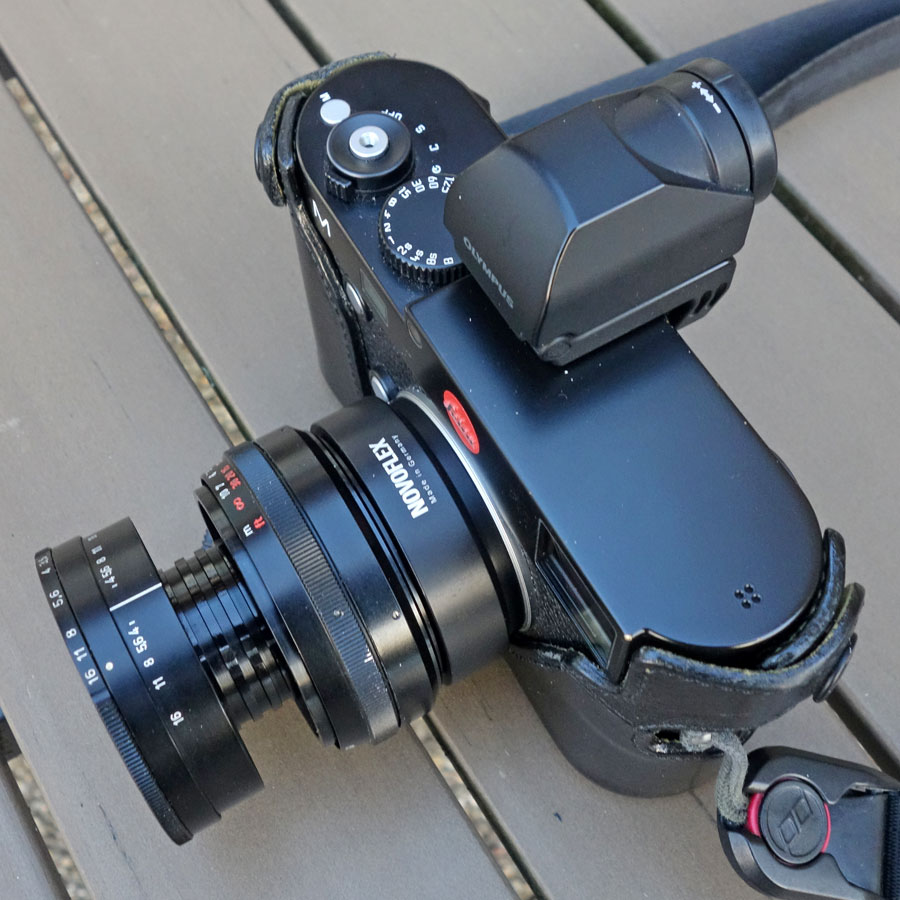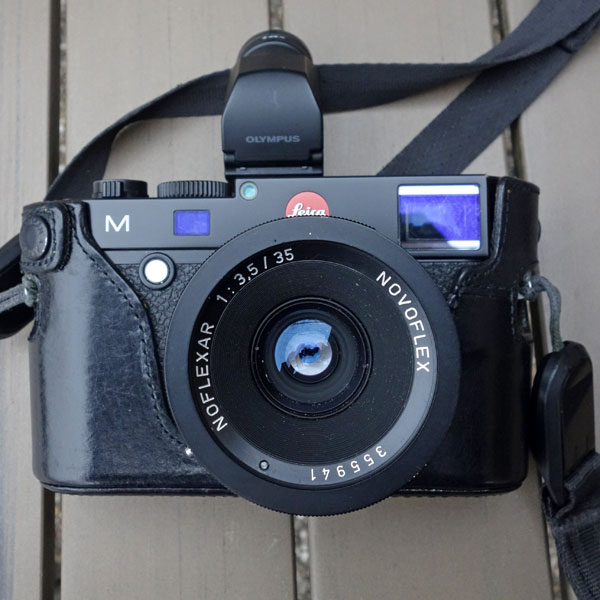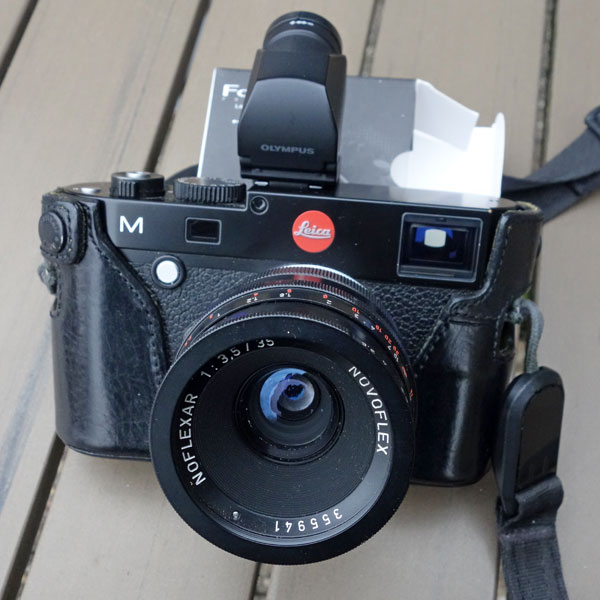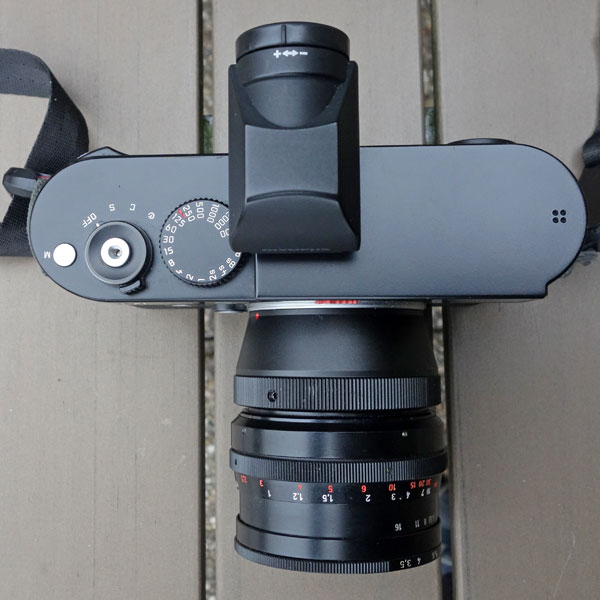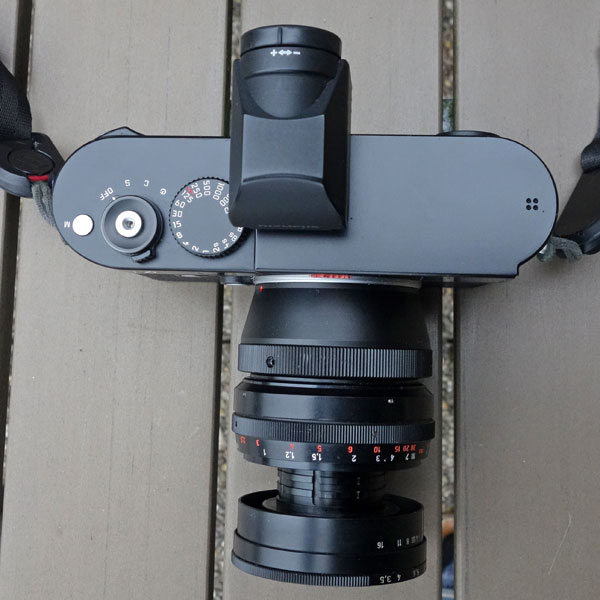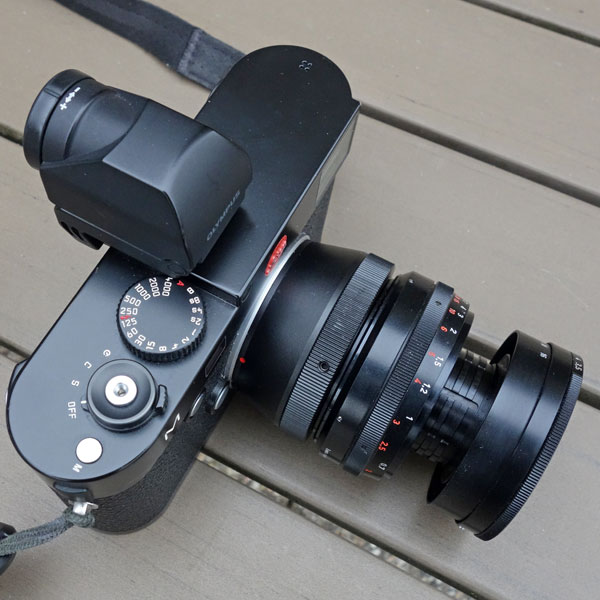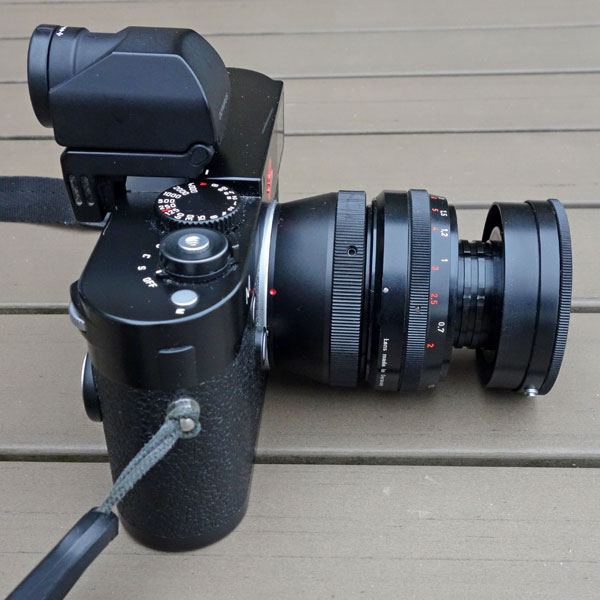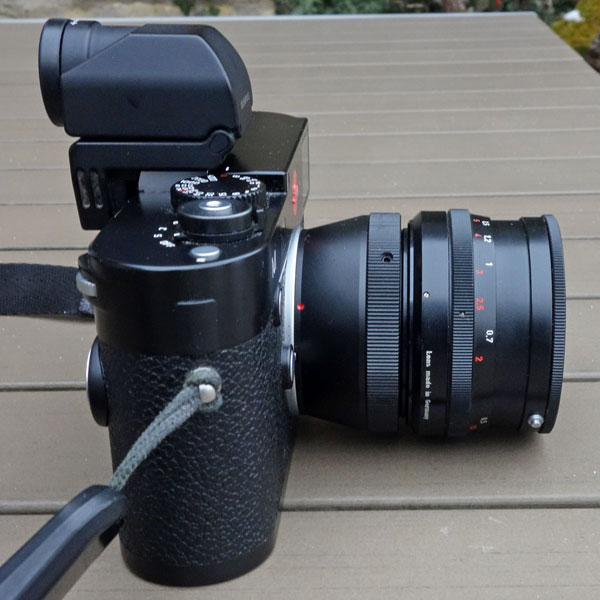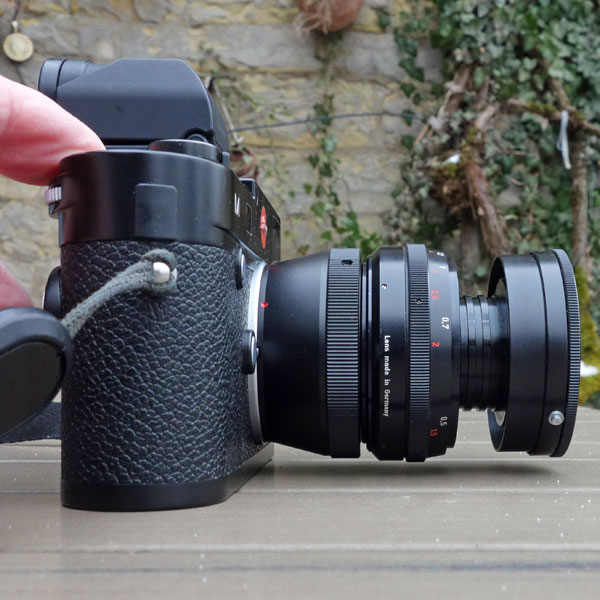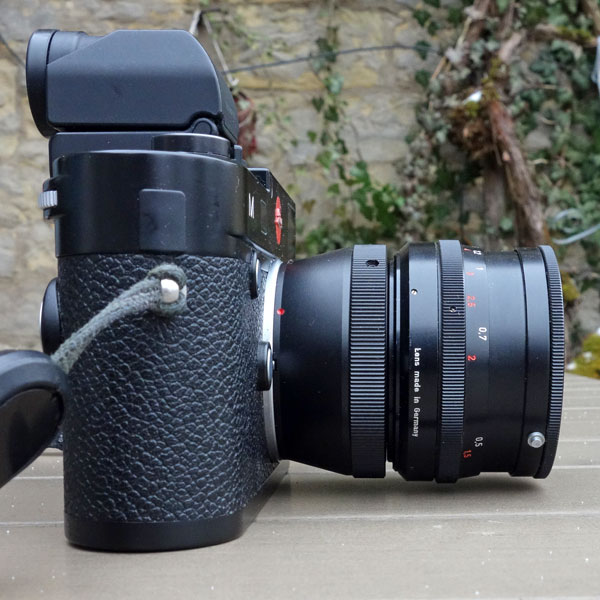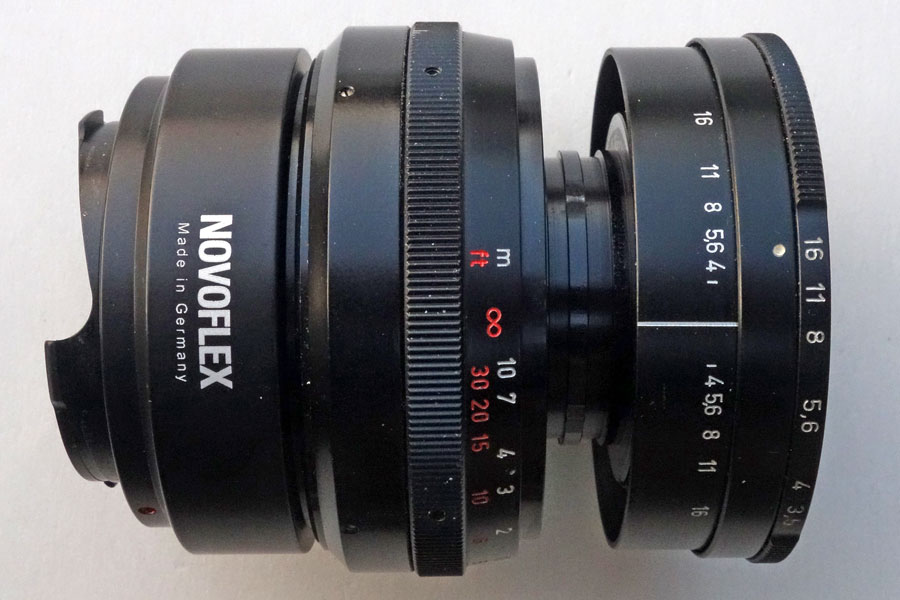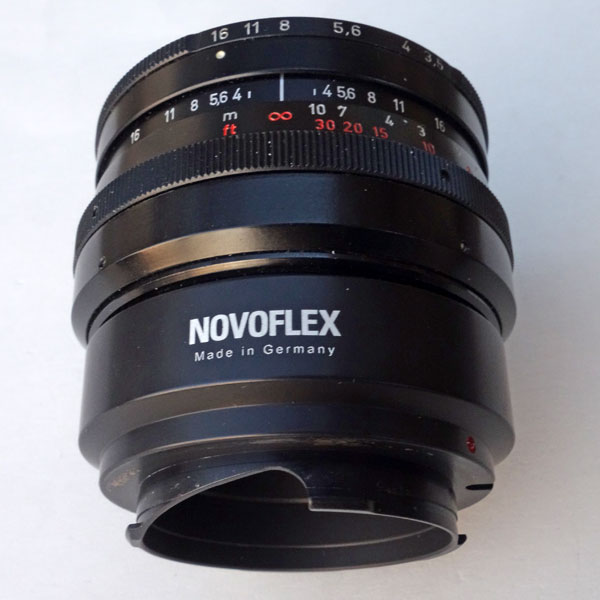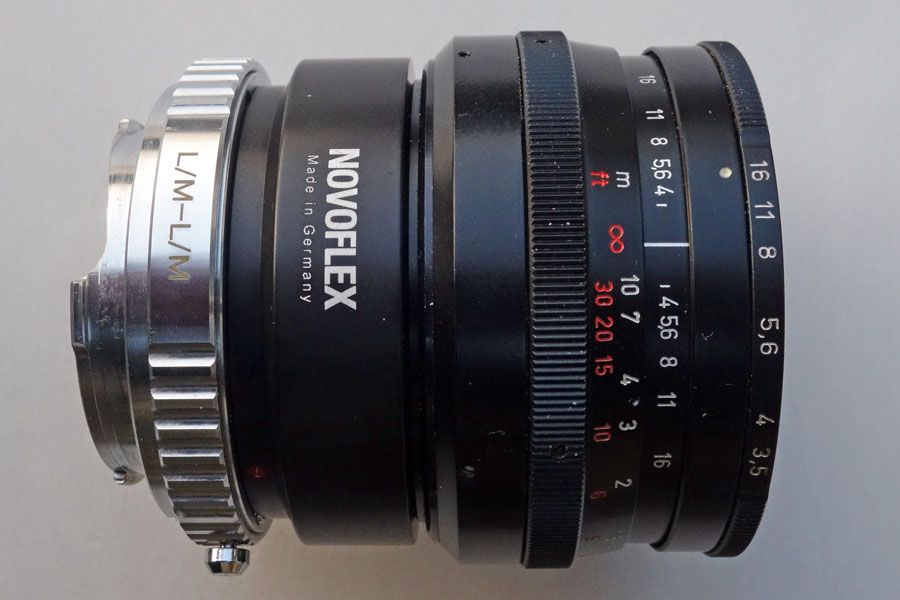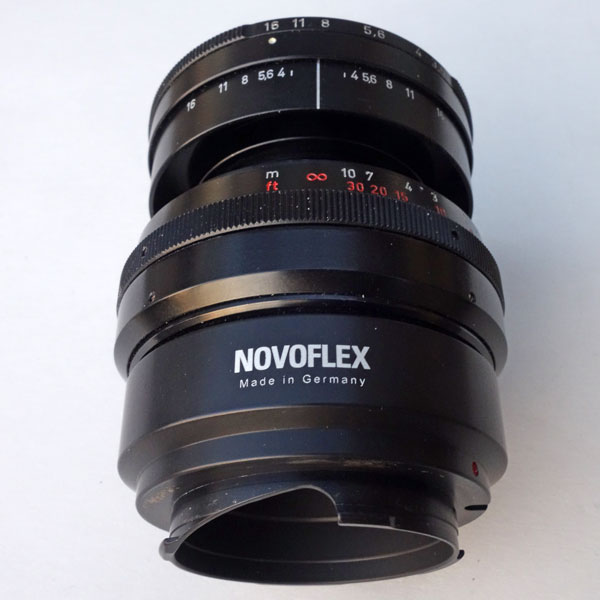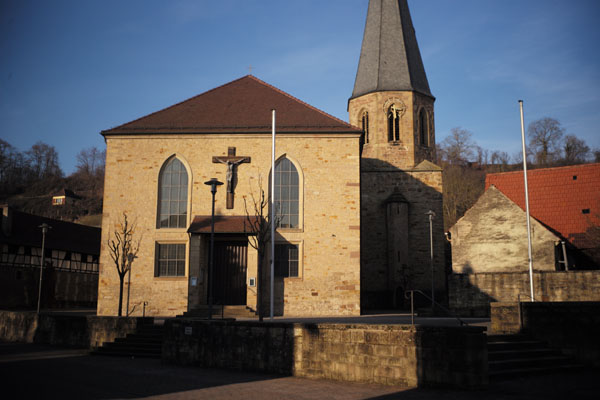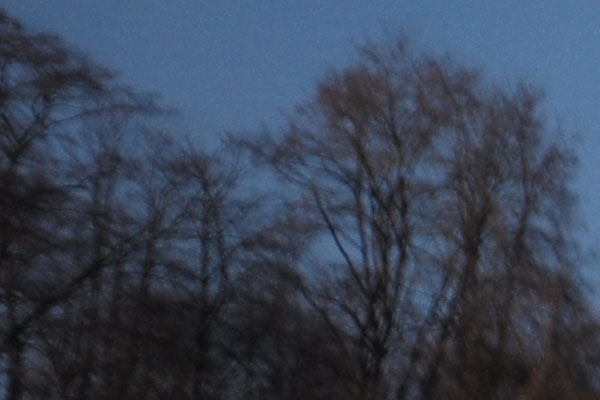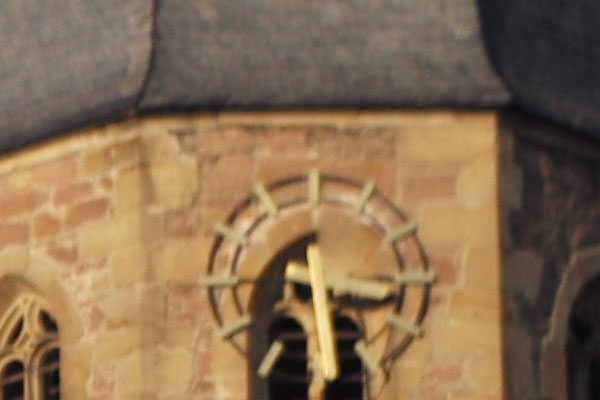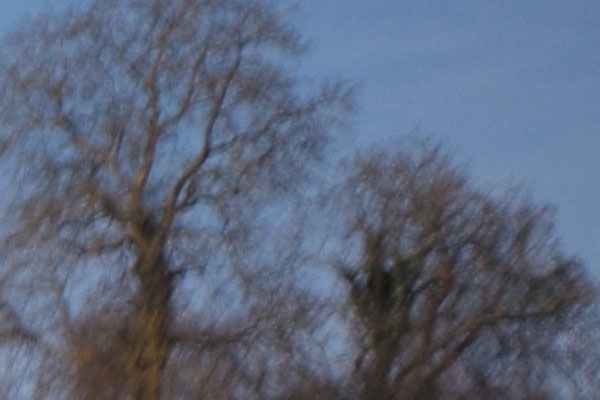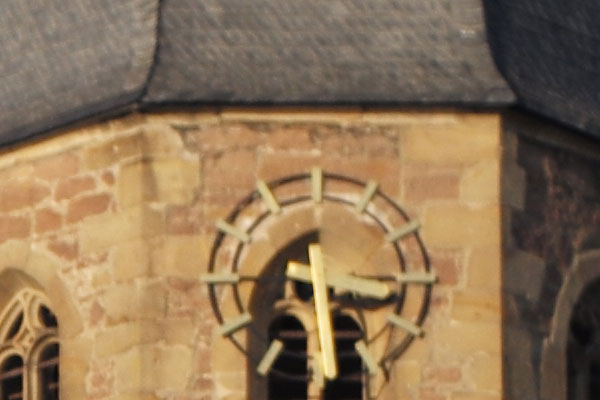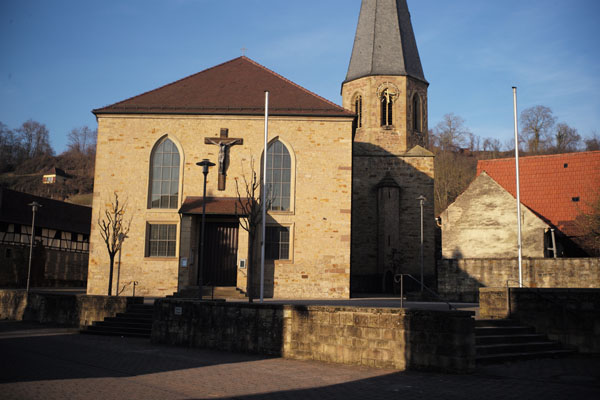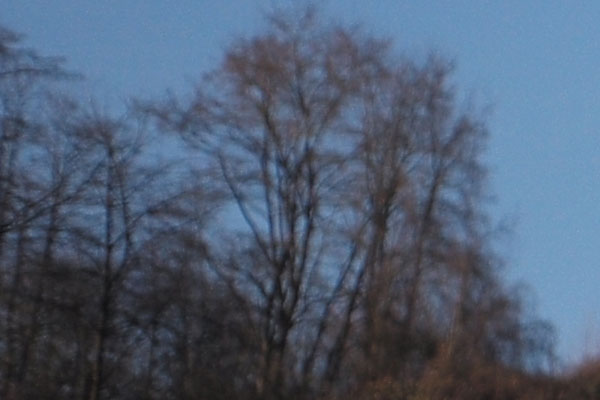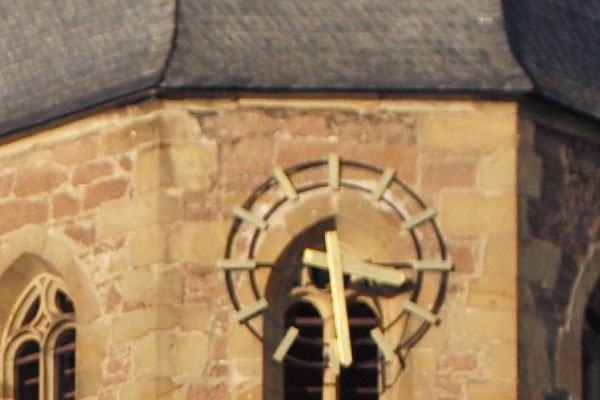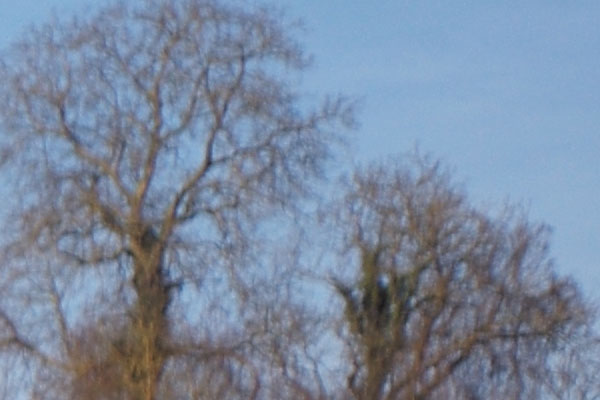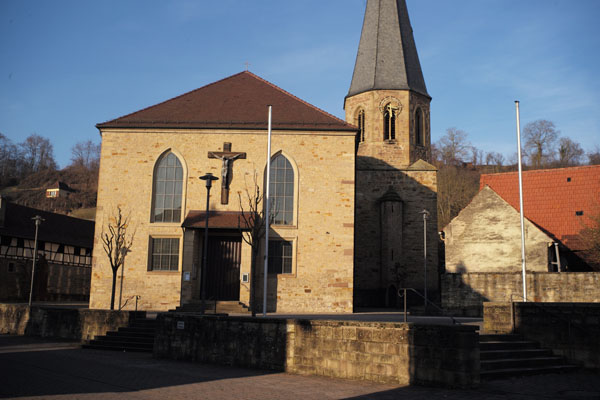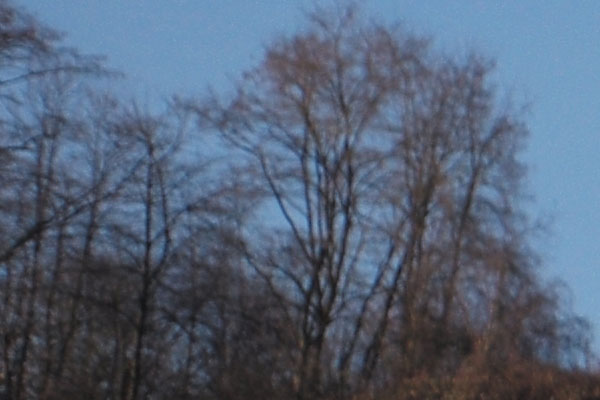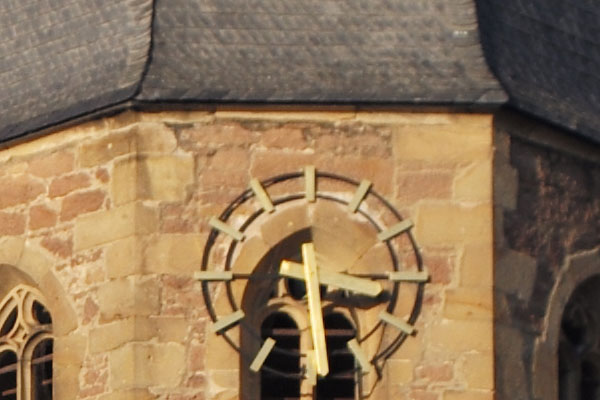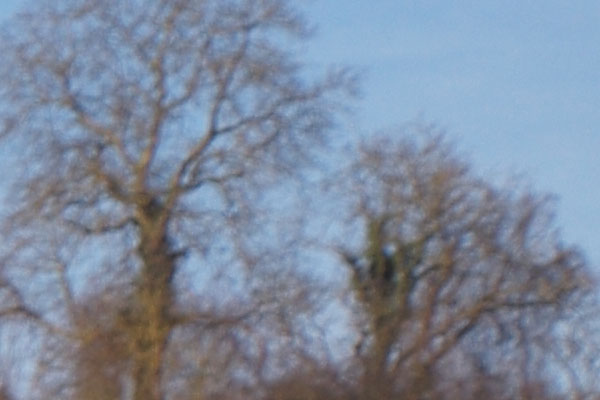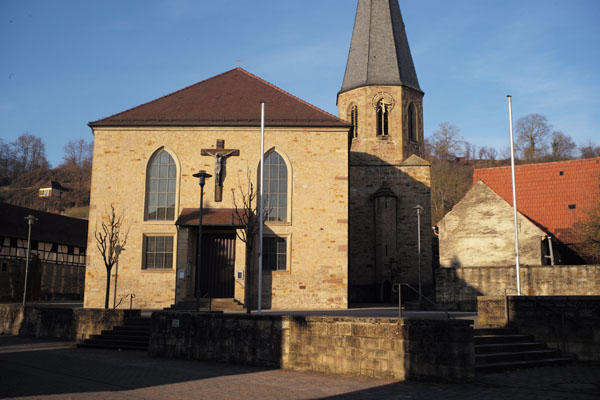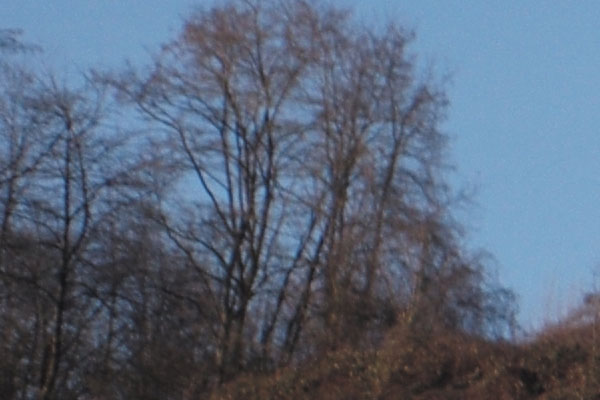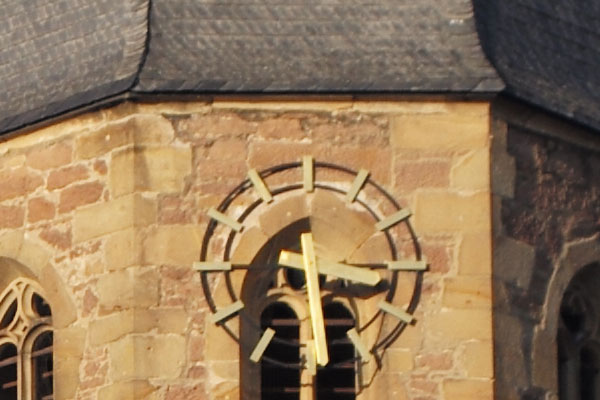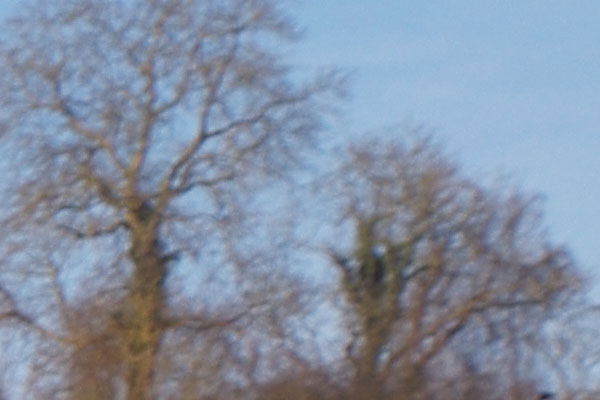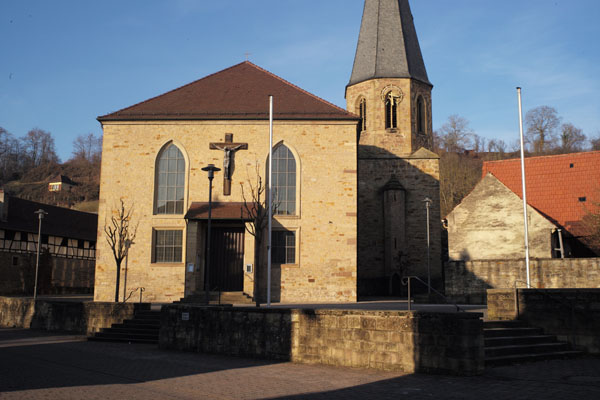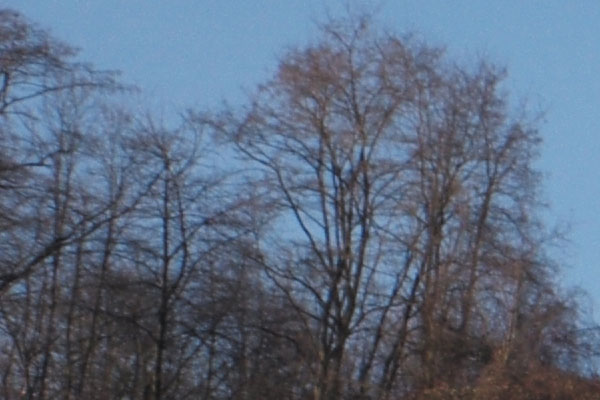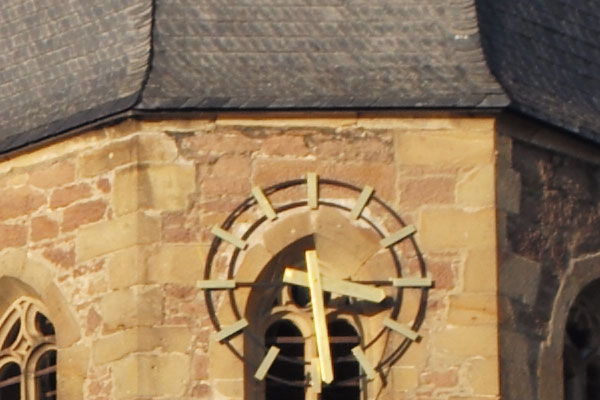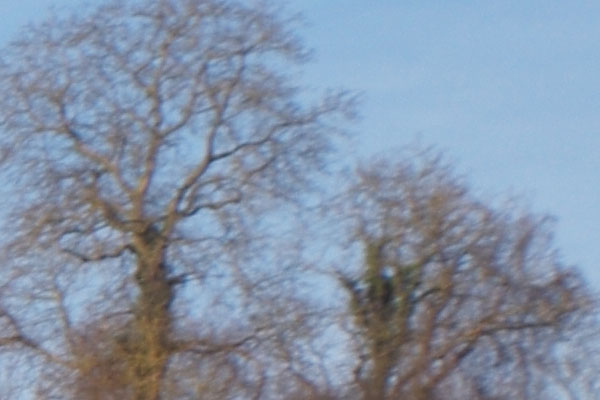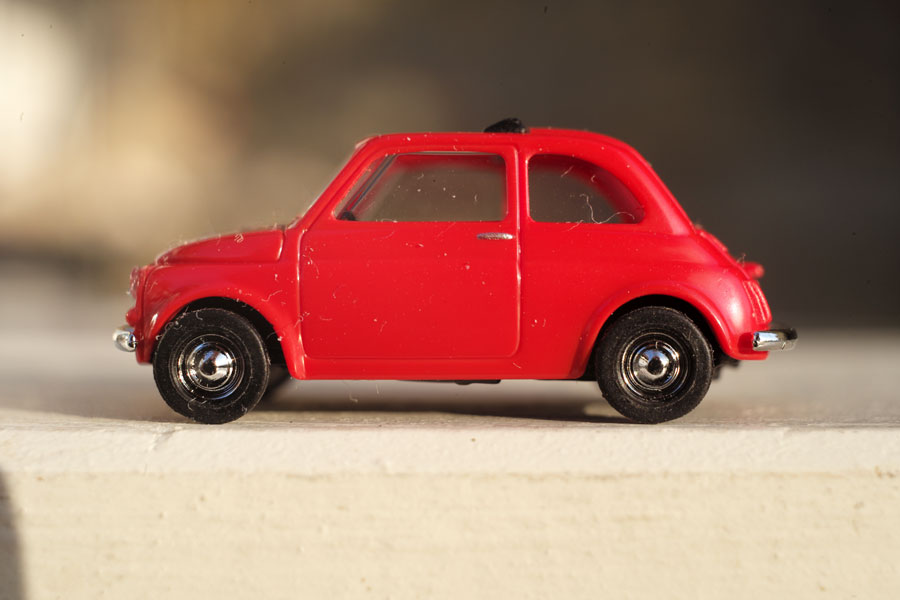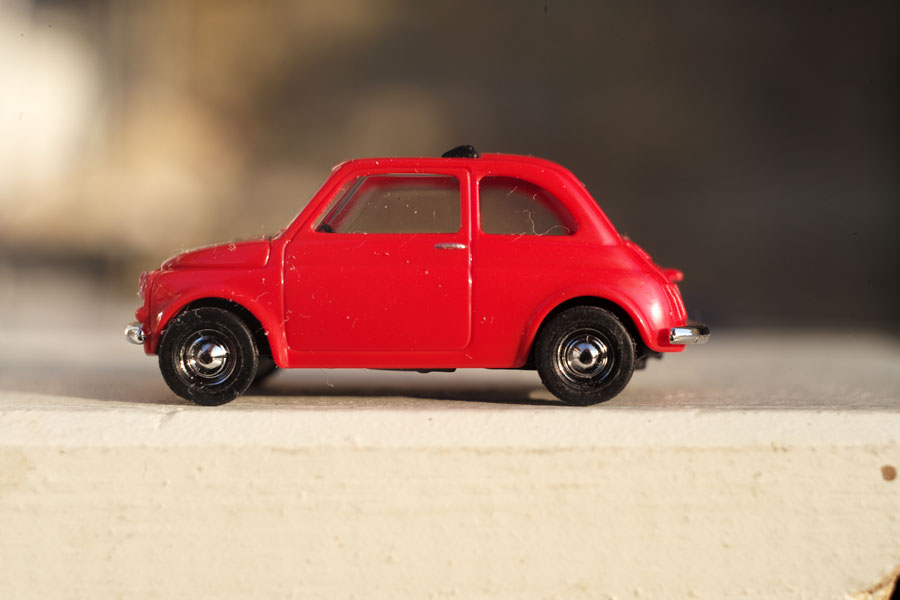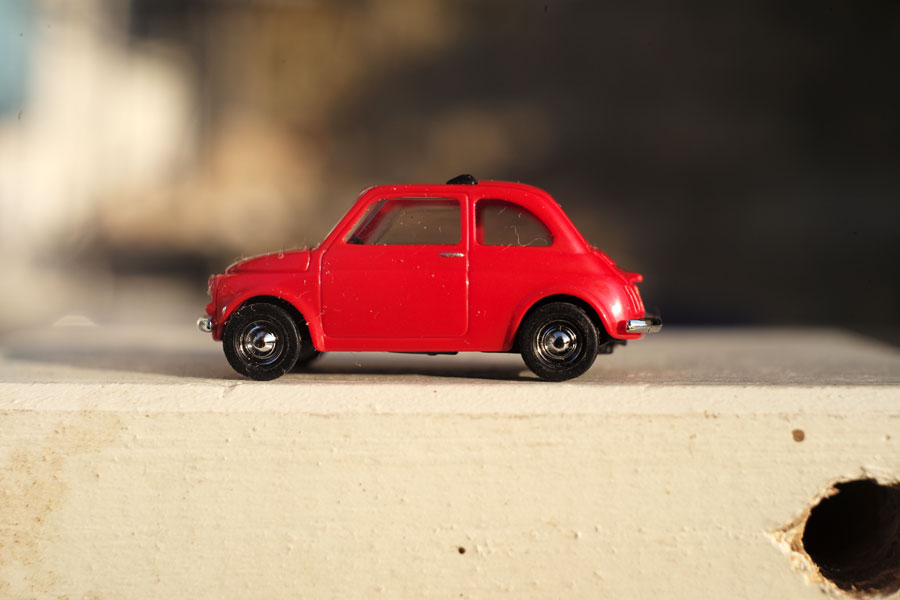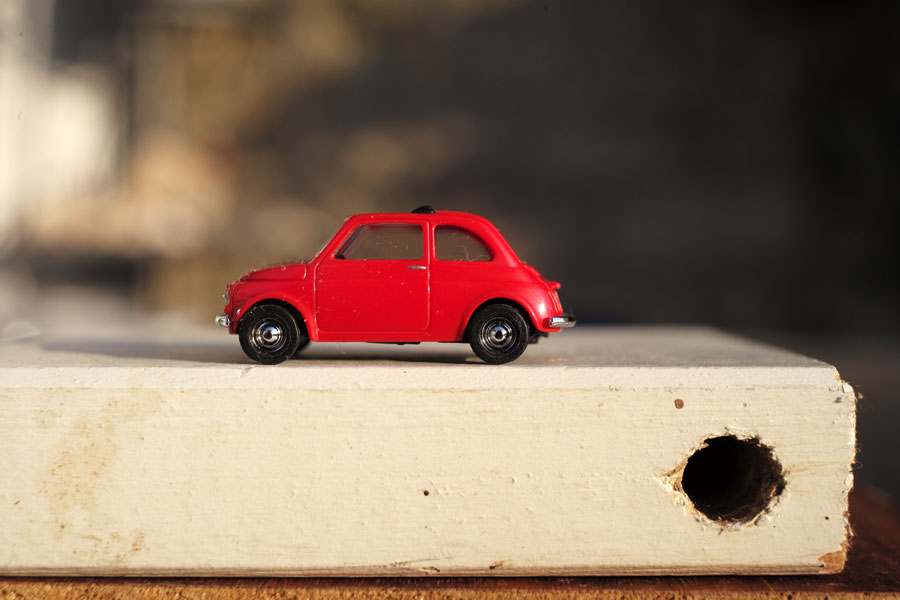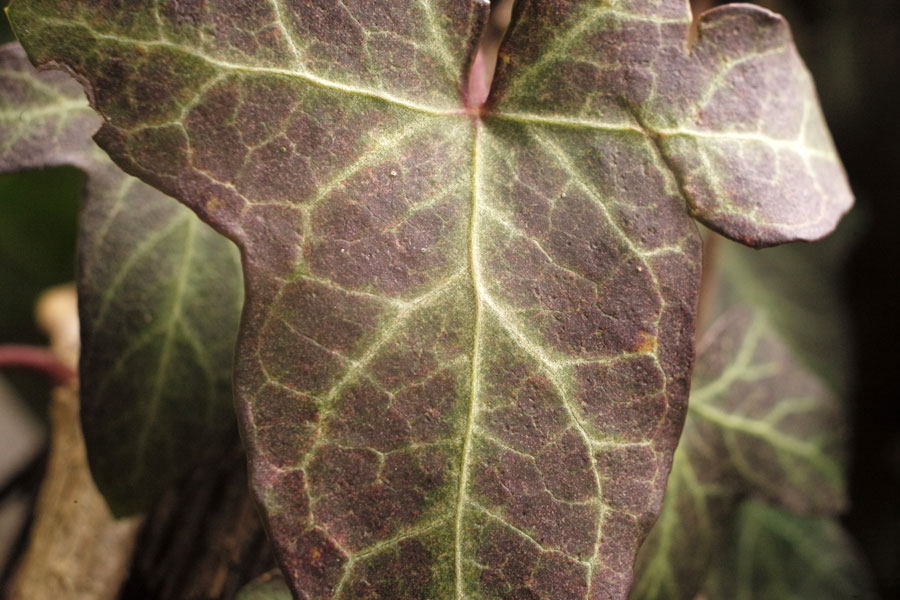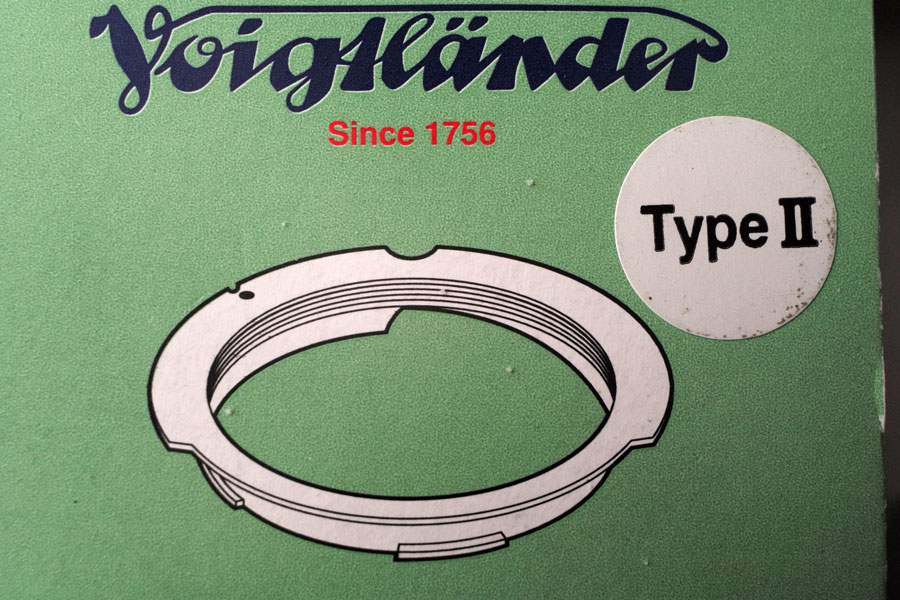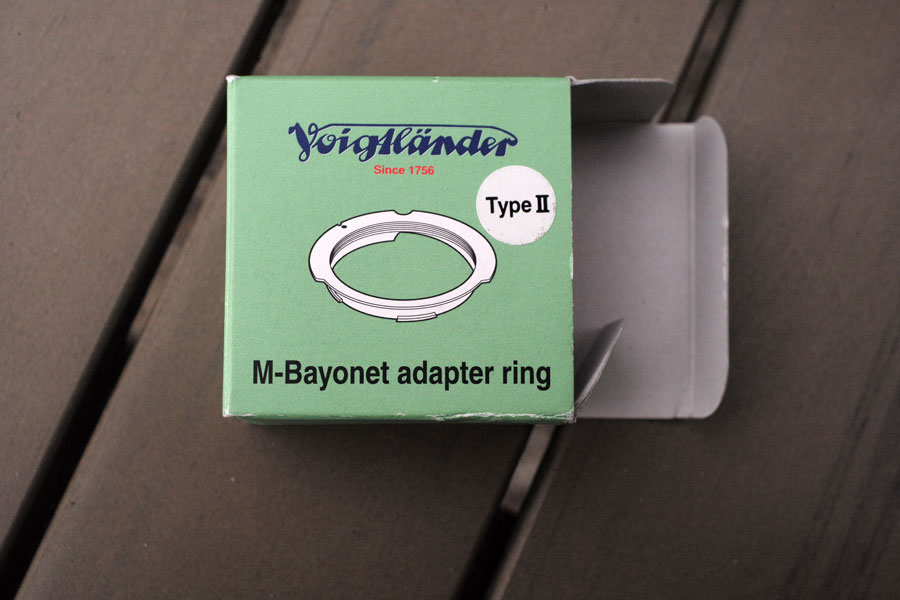Leica M (Typ 240): Novoflex Noflexar 35mm f/3.5 (M42)
Introduction | Body with Lens Attached | Lens with Fotodiox T-L Adapter Attached | Some Technical Data | Some Specialties | Color Shading and Vignetting | Sample Images | Close-Up Behavior | Conclusions | Links
Archive
On these pages you can find my first personal experiences with my M-mount lenses at the Leica M (Typ 240). This page is different, though, because it presents my first experiences with a M42 macro lens that I adapt via an M42-to-M-mount adapter to the Leica M (Typ 240). It is a Novoflex Noflexar 35mm f/3.5 macro lens and a very "special beast," namely a lens with "in-built" extension tubes. See also my pages with sample photos taken with this lens:
Close-Up Samples - Novoflex Noflexar 35mm f/3.5
All lens pages: Voigtländer 15mm f/4.5 | Voigtländer 15mm f/4.5 III | Zeiss Biogon 21mm f/4.5 | Leica Elmarit-M 21mm f/2.8 ASPH. | Leica Elmar-M 24mm f/3.8 ASPH. | Voigtländer 25mm f/4 (M39) | Minolta M-Rokkor 28mm f/2.8 | Zeiss Biogon 35mm f/2.8 | Novoflex Noflexar 35mm f/3.5 | Zeiss Sonnar 50mm f/1.5 | Voigtländer 75mm f/2.5 (M39) | Leitz Hektor 85mm f/2.5 (M39) | Leitz Elmar-C 90mm f/4 | Leitz Tele-Elmarit-M 90mm f/2.8 | Leitz Tele-Elmar 135mm f/4
See also: Zeiss Biogon 35mm f/2.8 versus Novoflex Noflexar 35mm f/3.5 - Zeiss Biogon 35mm f/2.8
| Note: I took my Leica M (Typ 240) out of service in the beginning of July, 2024 and sold it in January 2025. I therefore can no longer report any experiences with this camera and the respective lenses here. The Novoflex Noflexar 35mm f/3.5 was also the first lens that I sold (October 2024). |
Introduction
I learned of the existence of the Novoflex Noflexar 35mm f/3.5 lens in January 2017 in a thread in the l-camera-forum, in which the original poster was asking for a 35 mm lens for the Leica M that focuses as close as possible. Poster duckrider there mentioned the Noflexar as the lens that could not be beaten in this respect. He also linked to the technical data of the lens so that I got an impression of the lens, which was manufactured since 1962 in Germany (by Staeble) and is no longer available from Novoflex. I read the specs, found the lens interesting and searched the Internet for it. There were some not too bad opinions on the lens, a few advertisements of used lenses that had already been sold in the meantime - and I found a classified ad ("Kleinanzeige") at Ebay that offered an "attic finding" ("Dachbodenfund") at 160 EUR. Since an adapter was needed for using this lens at the Leica M (it had a screw mount, but which one was unclear at that time...), I asked for a lower price, and we ended up at 120 EUR.
It took some time, until I finally had the lens in my hands (January 24, 2017). I realized that the lens has an M42 mount (that is, it is the M42 version COWEIT), and therefore immediately ordered an M42-to-Leica M adapter from Novoflex (LEM/CO, 89 EUR) to be able to use the lens at my Leica M (Typ 240). The adapter arrived two days later (January 26, 2017).
The lens was/is in fairly good condition. Regrettably, the distance ring is stiff and very hard to turn. Maybe, I will have to have the lens cleaned one day...
Adapters...
Since my Novoflex Noflexar 35mm f/3.5 lens has an M42 screw mount, I need an adapter to attach it to my Leica M (Typ 240). But initially, I did not have the correct one at hand. However, I own a Fotodiox T-L(M) adapter that I use for attaching the Leica to a telescope. This adapter has a 42 mm screw mount, it is, however, a T-mount. I tested whether the lens might be used with this adapter, because I was eager to take some photos with the lens. And indeed, I was able to attach the lens to the adapter, although, as I read later, the T-mount has a thread pitch of 0.75 mm, whereas the M42 mount has one of 1 mm. I found this out only "after the fact" and hoped that I did not damage the lens's screw mount and that the M42 adapter would still fit the lens...
The Novoflex LEM/CO adapter arrived two days later, and I was able to attach it to the lens without problems. There was some slack, and perhaps this was the reason that I was also able to attach the T-mount adapter to the lens. But now I was cautious and did just one more "final" test with the T mount adapter, but did not really fix it to the lens. The T-mount adapter seemed to have even more slack than the M42 adapter...
The Fotodiox T-L(M) adapter works like an extension ring (2.7 cm). Therefore, the lens cannot be focused at infinity, but only very close, even when distance is set to infinity. This would, however, not present a problem to me, because I want to use the lens as a macro lens. The "real" issues for me are the different thread pitches. In addition, the Fotodiox adapter fits too tightly to the Leica M so that I have problems with mounting it to the camera (and unmounting it again). The Novoflex adapter is indeed much better in this respect. It leads, of course, to lower magnifications than the Fotodiox adapter and it looked at first sight as if I were able to focus up to infinity. First tests revealed, however, that this is not quite the case, particularly when the aperture is wide open. This is described further down.
Luckily, the Quenox Extension Tube for Leica M offers the option to achieve even higher magnifications by extending the lens barrel for another 1 cm. I cover this aspect on this page as well (see below).
Photos: Fotodiox T-L(M) adapter, Novoflex M42-to-Leica M adapter (LEM/CO), Quenox Extension Tube for Leica M
The Lens Alone...
My sample of the Novoflex Noflexar 35mm f/3.5 with M42 mount (COWEIT) has the serial number 355941. I do not know which production year this points to, but I read that the lens was manufactured in the 1960s and was the only macro lens that Novoflex sold (as stated above, it was manufactured by Staeble who sold a more or less identical lens).
Photos: Novoflex Noflexar 35mm f/3.5 lens with different views and different extensions (there are four click-stops for extending the lens)
My "Macro Set"
To be able to use the Novoflex Noflexar 35mm f/3.5 lens at the Leica M (Typ 240), an M42-to Leica M adapter is needed. In my case, it is the Novoflex LEM/CO adapter. Optionally, I can use an extension tube, a Quenox Extension Tube for Leica M, to boost magnification a little (see below; a bellows would boost it much more).
Photo: Novoflex Noflexar 35mm f/3.5 lens with Novoflex LEM/CO adapter and Quenox Extension Tube for Leica M
Body with Lens Attached
Using the Novoflex LEM/CO Adapter
Lens with Novoflex LEM/CO Adapter
Photos: Leica M (Typ 240) with Novoflex Noflexar 35mm f/3.5 lens and Novoflex LEM/CO adapter
Lens with Novoflex LEM/CO Adapter and Additional Quenox Extension Tube for Leica M
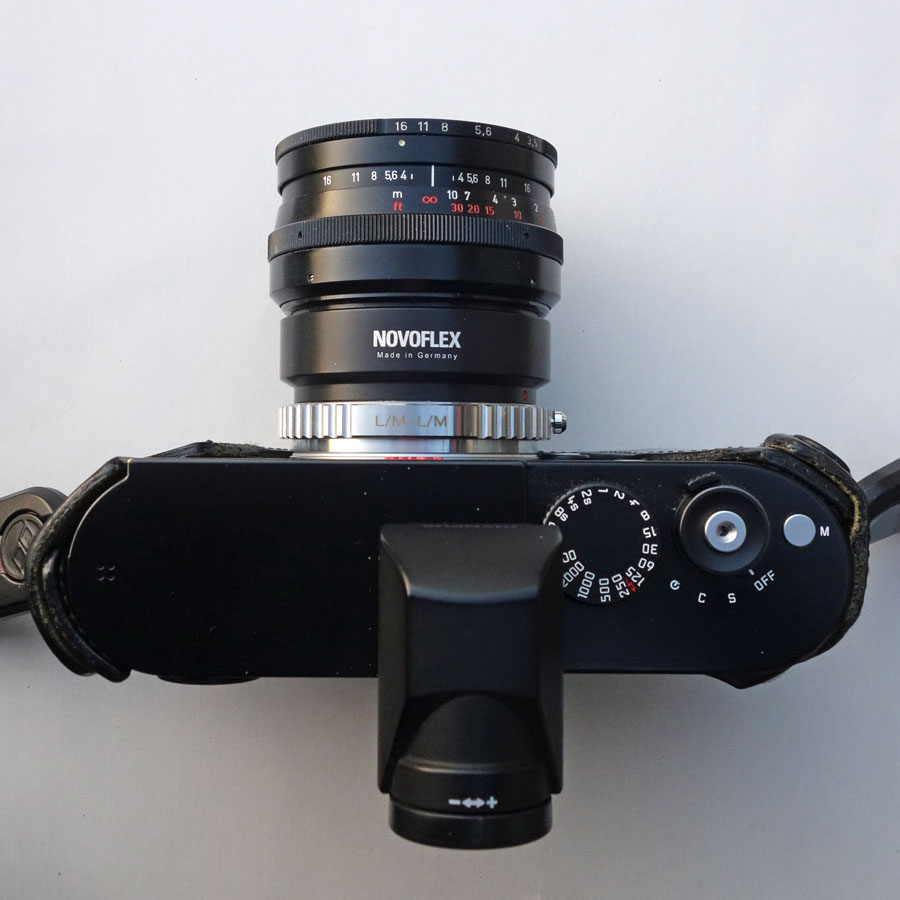 |
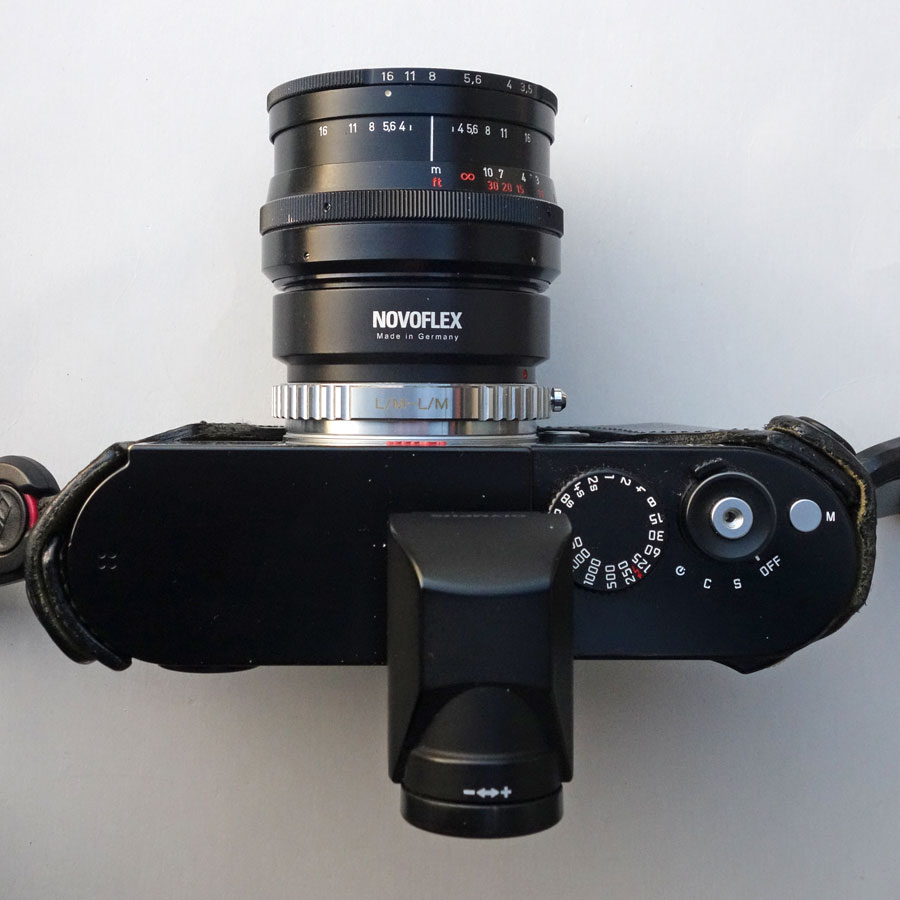 |
|
Collapsed, distance set to infinity |
Ditto, one click-stop, distance set to infinity |
|
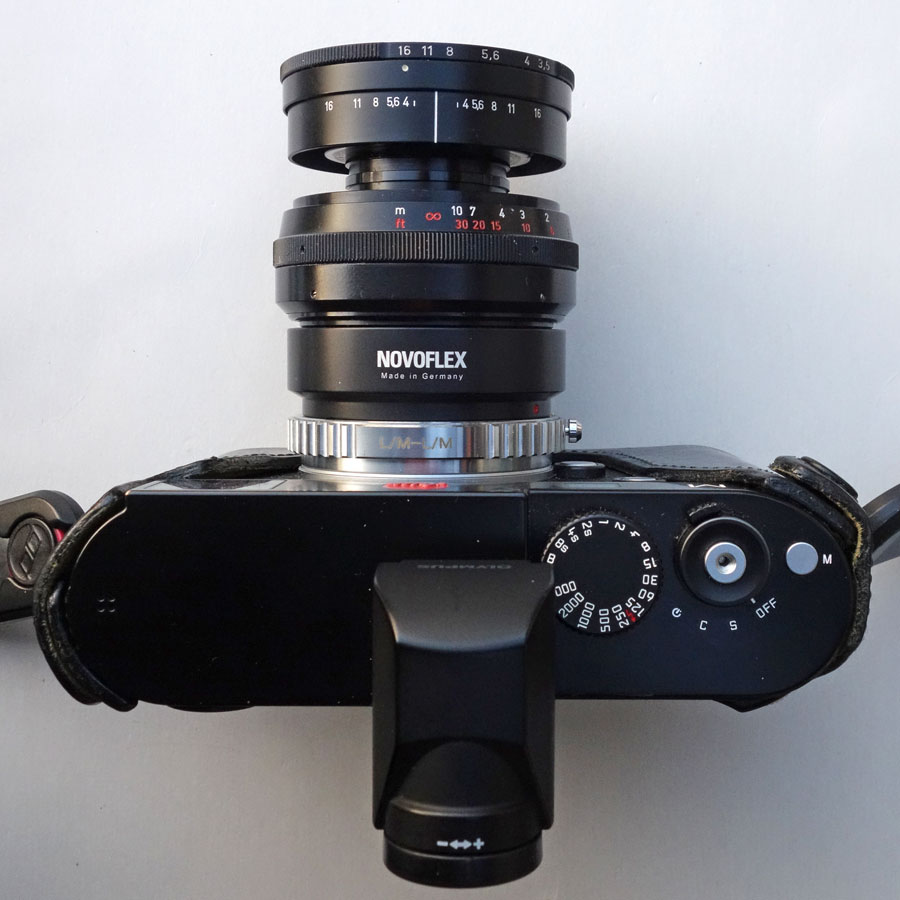 |
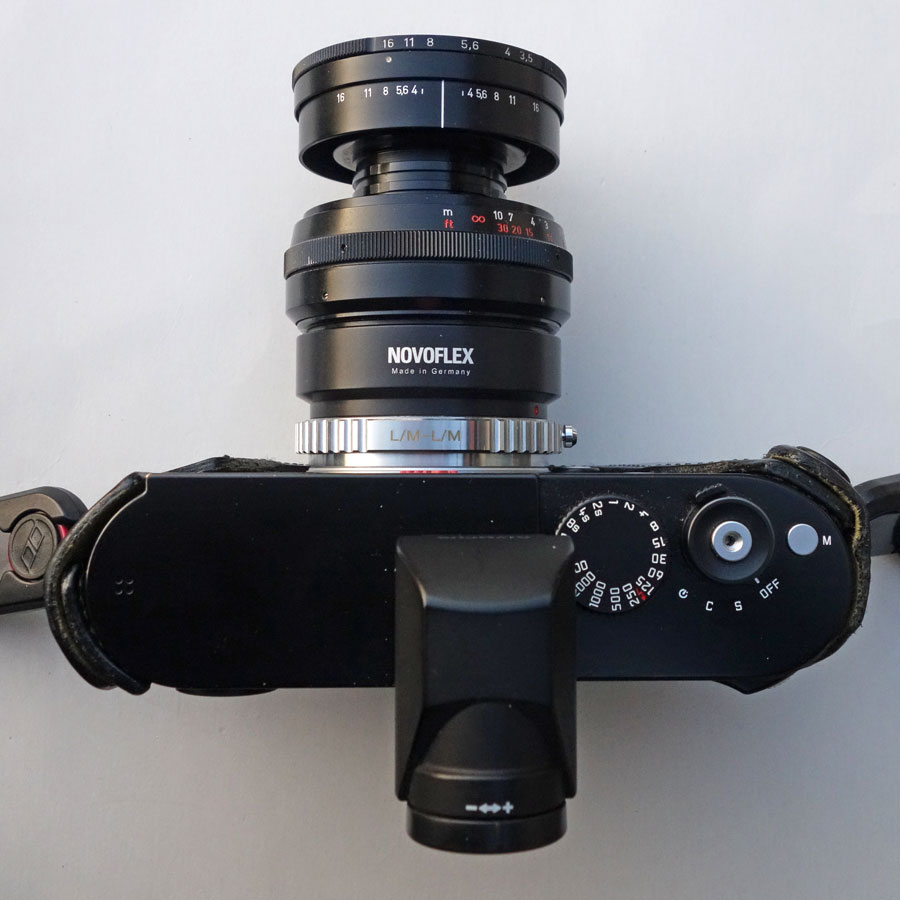 |
|
Ditto, four click-stops, distance set to infinity |
Ditto, distance set to close (about 0.3 m) |
Photos: Leica M (Typ 240) with Novoflex Noflexar 35mm f/3.5 lens, Novoflex LEM/CO adapter, and additional Quenox Extension Tube for Leica M (1 cm)
Using the Fotodiox T-L(M) Adapter (Not Recommended)
Photos: Leica M (Typ 240) with Novoflex Noflexar 35mm f/3.5 lens and Fotodiox T-L(M) adapter
Lens with Adapter Attached
Lens with Novoflex LEM/CO Adapter and Quenox Extension Tube
Lens with Fotodiox T-L Adapter Attached (Not Recommended)
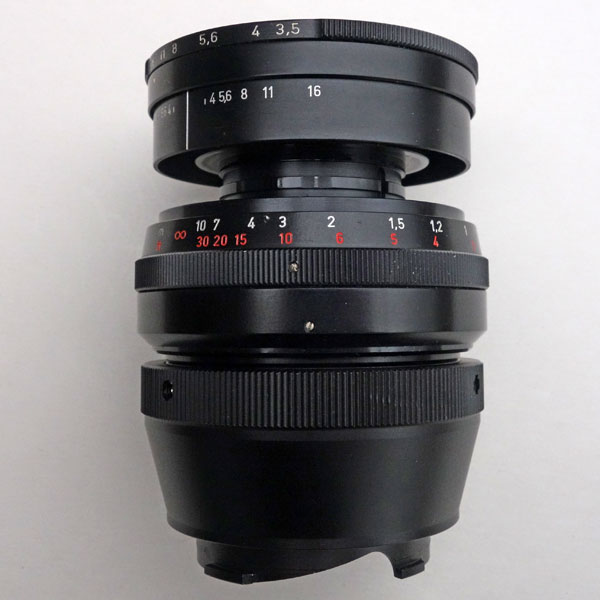 |
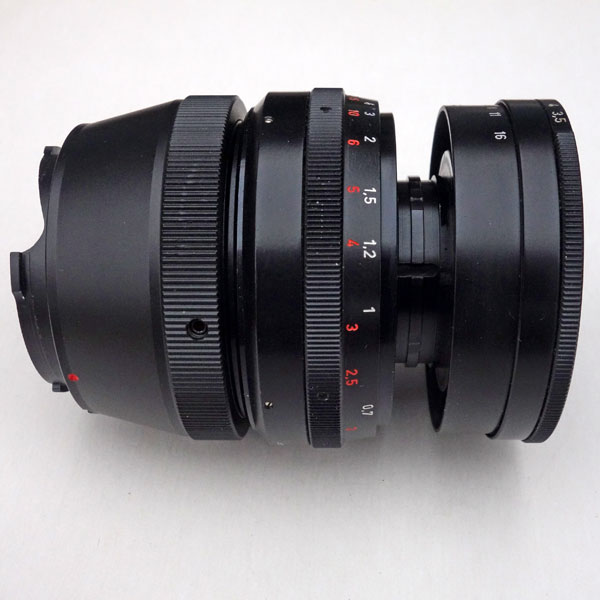 |
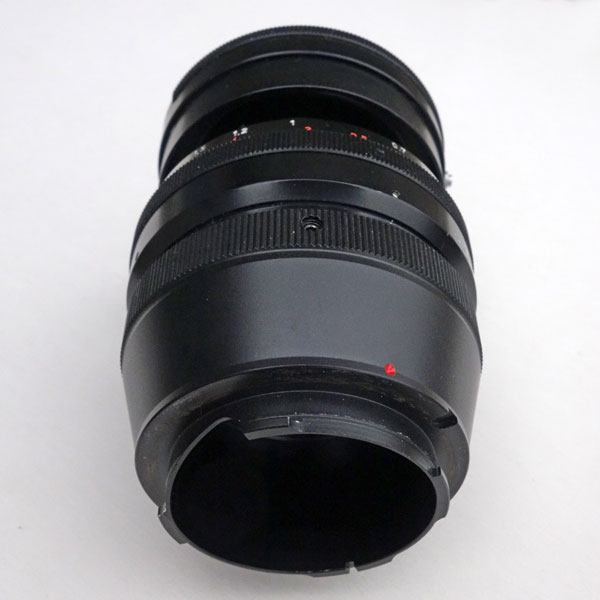 |
Photos: Leica Novoflex Noflexar 35mm f/3.5 lens with Fotodiox T2-L(M) adapter attached, lens fully extended
Actually, the Fotodiox T2-L(M) adapter should not fit the lens, because the T-mount has 0.75 mm thread pitch, whereas M42 has a 1 mm thread pitch. It seems that I did not damage the lens's screw mount...
Some Technical Data
| Focal length | 35 mm |
| Angle of view (35mm film) | 63° diagonal |
| Maximum aperture | 3.5 |
| f-stop range | 3.5-16 |
| Number of iris blades | 10 |
| Number of lenses/groups | ?/4 |
| Shortest distance | 40 cm (focuses up to infinity); the distance ring can be turned further to about 30 cm distance |
| Weight (Novoflex/own/incl. adapter) | 185 g / 194 g / 255 g (the LEM/CO adapter weighs 61 g) |
| Length (overall/from flange) | about 45 mm / 35 mm (collapsed) |
| Maximum diameter | 60 mm |
| Filter thread | 49 mm x 0.75 |
| Lens hood | built-in |
| Smallest object field / magnification | Used as "normal" lens: 265 mm / 1: 7.4 (from photo); used as macro lens: 7 cm x 5 cm / 1:2 (without additional bellows extension), 7 mm x 5 mm / up to 5:1 (with additional bellows extension); from 1:1 on, the lens system should be reversed |
Novoflex once supplied adapter rings (E49, 0.75 mm thread pitch) for some older camera mounts (UMCO (M42), UMEX (Exakta), LEIUM (Leica)) that allowed reversing the lens when used with magnifications of 1:1 and beyond.
Some Specialties
According to Novoflex, the Novoflex Noflexar 35mm f/3.5 lens serves two purposes: (1) It is a 35 mm lens that offers more field of view than a normal lens (50 mm), (2) it serves as a macro lens with magnifications of up to 1:2 without any other tools - the lens barrel can simply be extended like extension tubes via four click-stop positions. Fine tuning seems to be possible by turning the distance ring (the technical data sheet speaks of a "helical focusing mount"...). Larger magnifications are possible using extension tubes or bellows and/or by reversing the lens. I tested the Quenox Extension Tube for Leica M (1 cm) with the lens, and it seems to work well. Maximum magnification was, however, still below 1:1 with this 1 cm extension tube (lens not reversed).
From 1:1 or larger, Novoflex recommends to reverse the lens; they supplied respective rings for the filter thread (UMCO (M42), UMEX (Exakta), LEIUM (Leica)), but I do not know whether these are still available. They also state that the lens barrel acts as a lens hood in this case.
As with extension tubes, exposure times have to be increased when the lens barrel is extended - 1/4 of an f-stop for each click-stop, resulting in one f-stop for maximum extension, which is acceptable in my opinion.
Another specialty of the lens is no longer needed in the "age of electronic viewfinders: You can set a "barrier" (called a "pre-set diaphragm") at the f-stop that you want to use. This allows you to focus wide open and then simply turn the aperture ring until you hit the barrier at the f-stop that you want to shoot with. Perhaps, I will set the barrier simply to the smallest opening of f/16...
This lens has a depth of field scale, which is praised in the technical data, but it should only be applicable when the lens is collapsed and acts as a "normal" 35 mm lens.
Note that the f-stop ring does not have "click-stops"...
Color Shading and Vignetting
When first used with the Fotodiox T-L(M) adapter, I was not able to see any color shading at a first quick look. I took a few calibration shots with the Novoflex LEM/CO adapter to verify my first impressions, and indeed the same is true for the Novoflex LEM/CO adapter. Here are the calibration shots:
| Lens Detection Option, Selected Lens | f/3.5 | f/8 |
| "Off" None EV 0 |
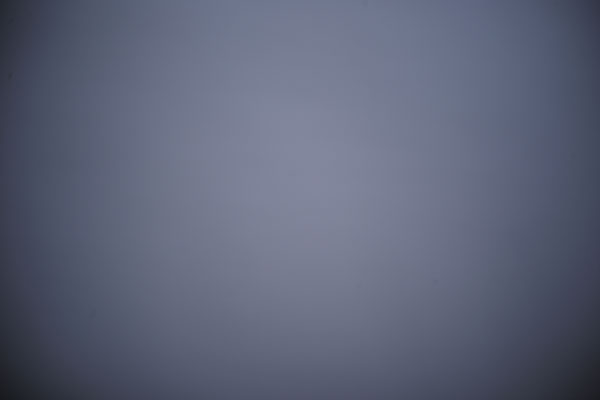 |
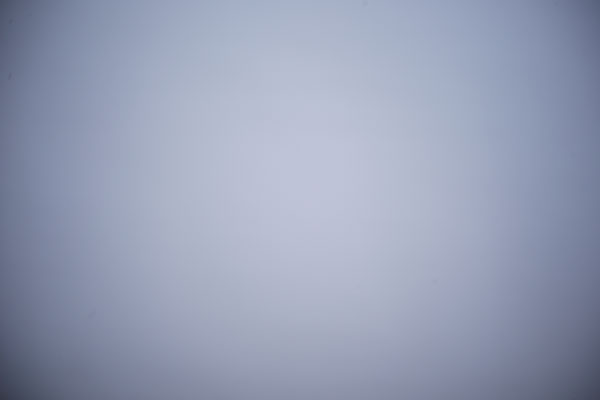 |
| "Off" None EV +1 |
 |
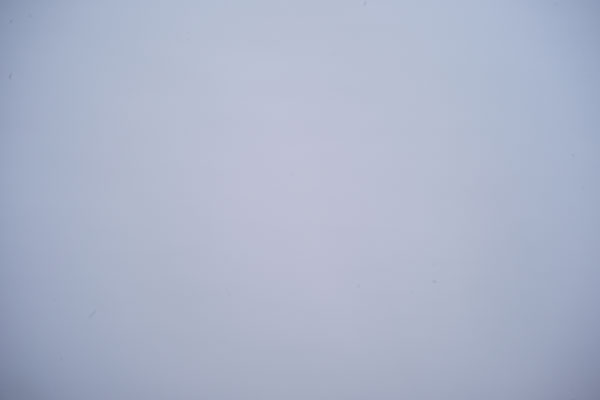 |
Photos: Calibration shots taken with the Novoflex Noflexar 35mm f/1.5 lens (taken at EV 0 and EV +1).
At EV 0, vignetting is clearly visible at f/3.5, but it gets lower at f/8, and there is no noticeable color shift in both conditions. At EV +1, which I usually use for calibration shots, vignetting is less pronounced in both conditions. However, for a macro lens, vignetting is not really an issue and sometimes even preferable.
Conclusion: This lens can and has to be used with lens detection set to "Off".
My current status: "Lens Detection" set to "Off."
Sample Images
In this section, I present photos that were taken with the lens used as a "normal" 35 mm lens, which focuses from 0.3 m to infinity (officially, focus starts from 0.4 m...), that is, the first use case of the two that Novoflex lists for this lens.
When I use the lens with the Novoflex LEM/CO adapter at the Leica M (Typ 240), I have problems with focusing at infinity and even at distances of a few meters (see here for the latter case). Since I intend to use this lens primarily as a macro lens, this "issue" does not really matter for me... Nevertheless, I took a few similar series of test shots, in which I changed aperture between f/3.5 and f/16 and where I cared for that some objects were visible in the distance, particularly at the edges of the image frame. Below, I present the results of one such series of test shots. The other series that I took show similar results. I highly recommend that you download the original files by clicking the "overview" images to make up your own mind on this matter.
Overall, I would not use this lens for architectural or landscape photography, where it is important that everything is sharp up to infinity. When you can cope with a "fuzzy infinity" or this is what you desire, then this lens (with the respective combination of adapters and cameras...) might be worth a try. But watch out: I am not sure whether the results are specific to my lens and combination of mount, adapter, and camera or whether this result can be generalized - probably this is not the case...
Note: I also took my "usual" comparison photos that I mostly take on a specific walk where I photograph more or less the same objects. But I usually do not really care about whether the photos are indeed comparable. I did such a walk with this lens, too. But the results are not really helpful because there is a lot of fuzziness around the center, even at shorter distances. I present these photos on a comparison page with the Zeiss Biogon 35mm f/2.8 lens, because this way you have a comparison with a similar lens and can better find out where the problems of this lens may lie. This page is a little bit too long anyway...
Addendum
Here are a few shot with the lens in "normal use".
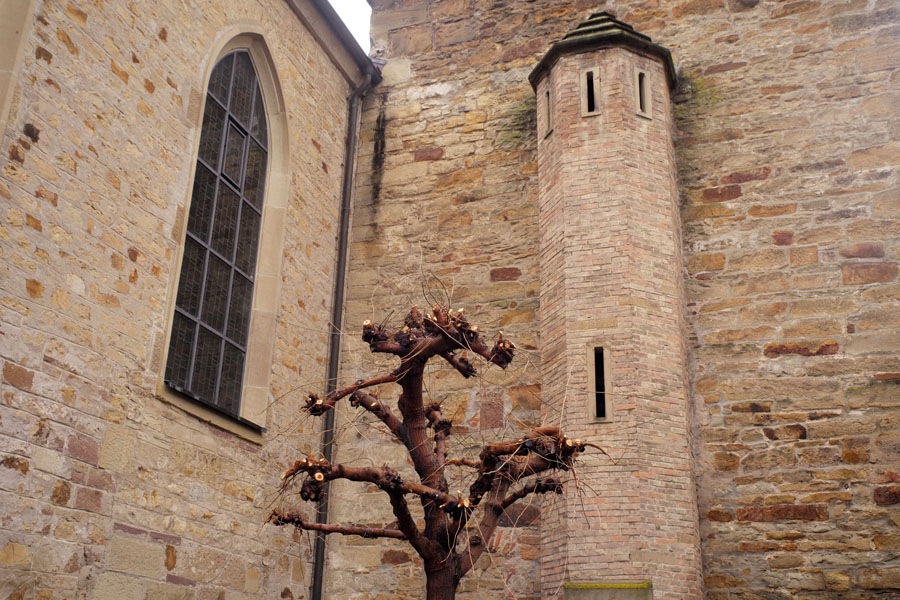 |
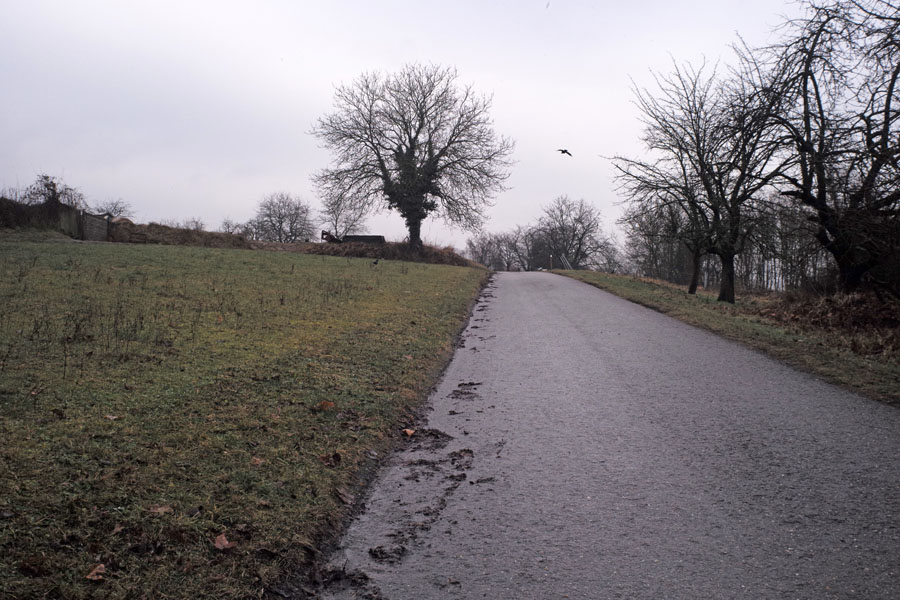 |
|
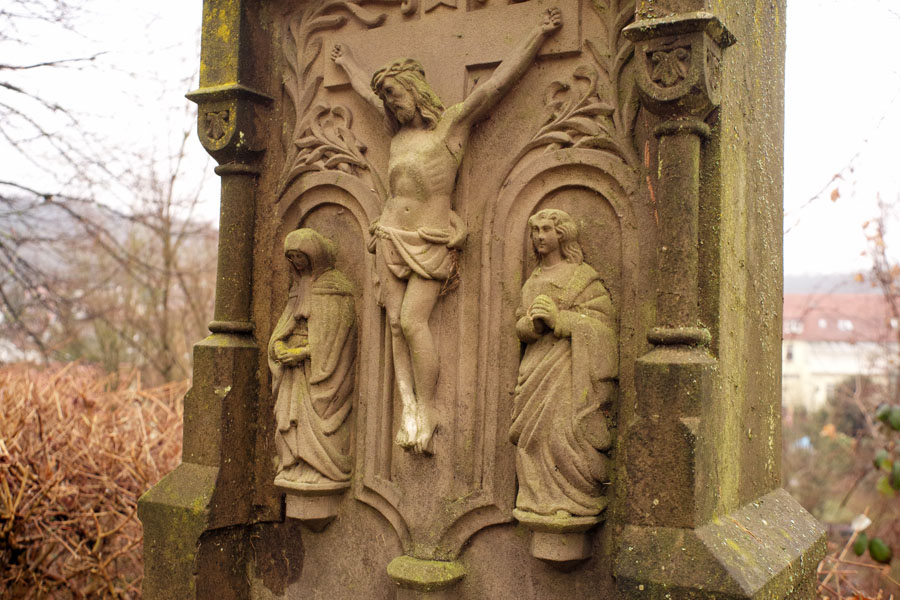 |
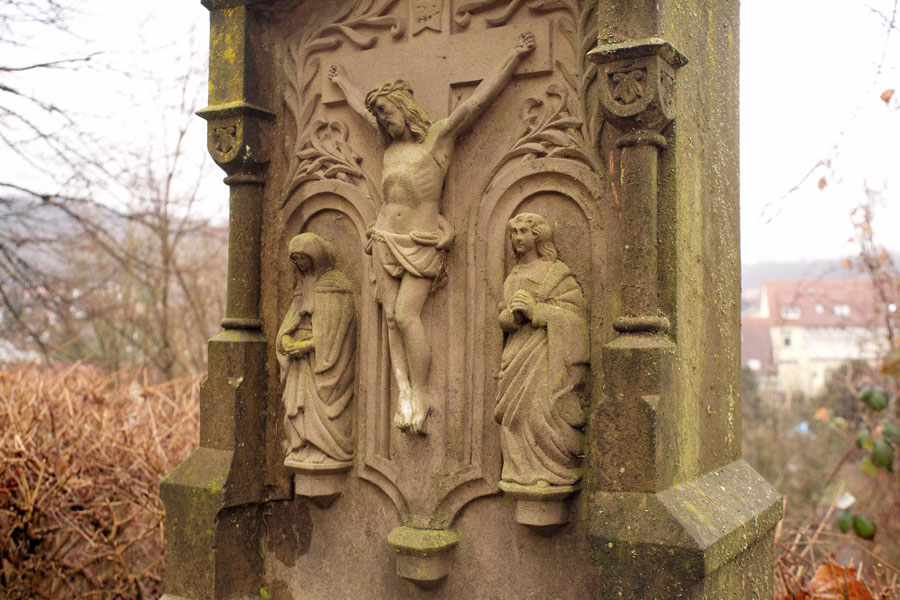 |
|
 |
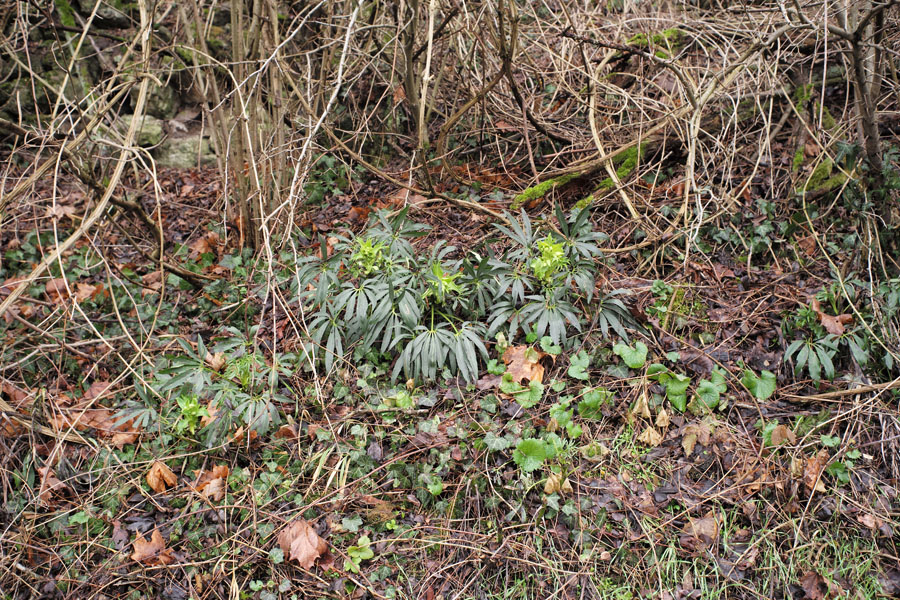 |
Close-Up Behavior
Now, I come to the second application that Novoflex lists for this lens: its use as a macro lens. The table below summarizes, which magnifications can be achieved with which lens setting without and with an additional Quenox Extension Ring. I do not present photos that "prove" my numbers, because in the end, I am probably the only person who will use this data... Anyway, this table should be taken with a grain of salt and be used only as an orientation aid.
Note that the values are somewhat different from my early data (if you saw this page in an early state...), particularly those with extension ring. All in all, I trust more the newer data that is published below (therefore, the older data is no longer available).
|
Lens & Novoflex LEM/CO Adapter |
Ditto & Quenox Extension Ring (1 cm) | |||||||
| Click-Stops | MiOW* |
Max. Magnification |
MiOW* |
Max. Magnification |
||||
Distance set > |
infinity | 0.3 m | inf | close | inf | close | infinity | 0.3 m |
| 0 | n.a. | 265 | n.a. | 1:7.4 | 130 | 89 | 1:3.6 | 1:2.5 |
| 1 | 320 | 145 | 1:8.9 | 1:4.1 | 93 | 70 | 1:2.6 | 1:2.0 |
| 2 | 260 | 105 | 1:7.3 | 1:2.9 | 73 | 58 | 1:2.0 | 1:1.7 |
| 3 | 110 | 78 | 1:3.1 | 1:2.2 | 60 | 50 | 1:1.7 | 1:1.4 |
| 4 | 82 | 65 | 1:2.3 | 1:1.8 | 51 | 43 | 1:1.4 | 1:1.2 |
*) MiOW = Minimum object width
As you can see from the table, there is some overlap between the ranges that the different click-stops cover when you turn the helical distance ring. A magnification of 1:2 can only be achieved when the distance ring is set to the closest distance (or close to it) and the lens is extended four click-stops (without extension ring). The latter costs one f-stop exposure-wise. With the Quenox extension ring (1 cm), one can come fairly close to a magnification of 1:1 and loses probably about two f-stops.
Test with a Real-World Object
The following test with a real-object led to slightly lower magnifications:
Close-Up Samples With Novoflex M42-to-Leica M Adapter (LEM/CO)
Below, I present a preliminary selection of close-up shots with the Novoflex Noflexar 35mm f/3.5 and the Novoflex M42-to-Leica M Adapter (LEM/CO) (sometimes, the photos were taken with an additional Quenox extension tube). These photos are presented for illustration only. I therefore do not offer the original files.
You can find these close-up photos and more on page Close-Up Samples - Novoflex Noflexar 35mm f/3.5.
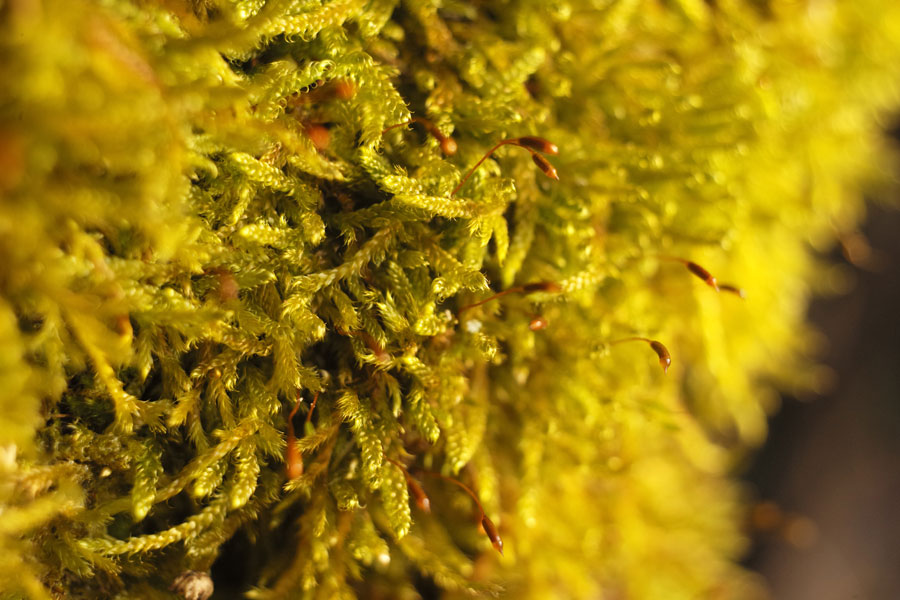 |
 |
|
 |
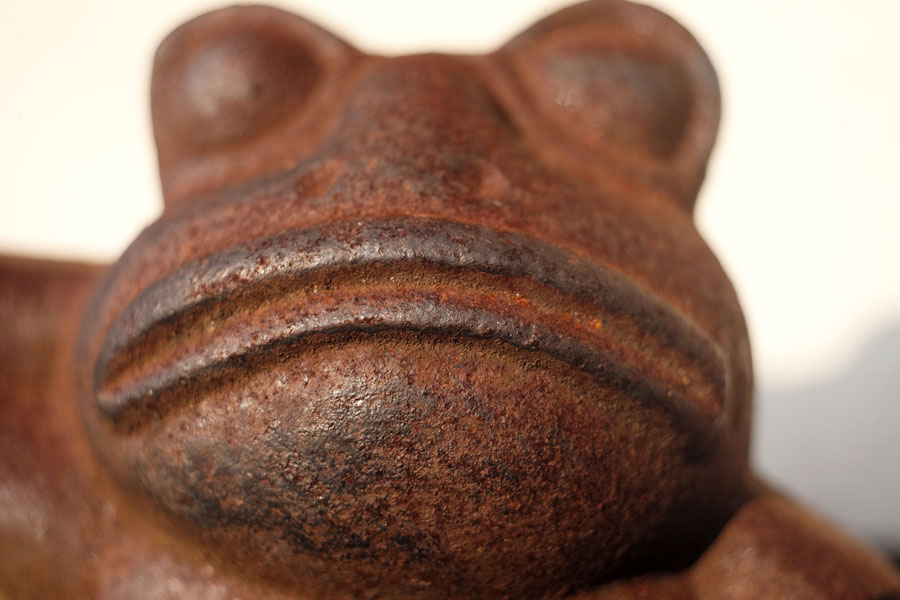 |
|
 |
 |
|
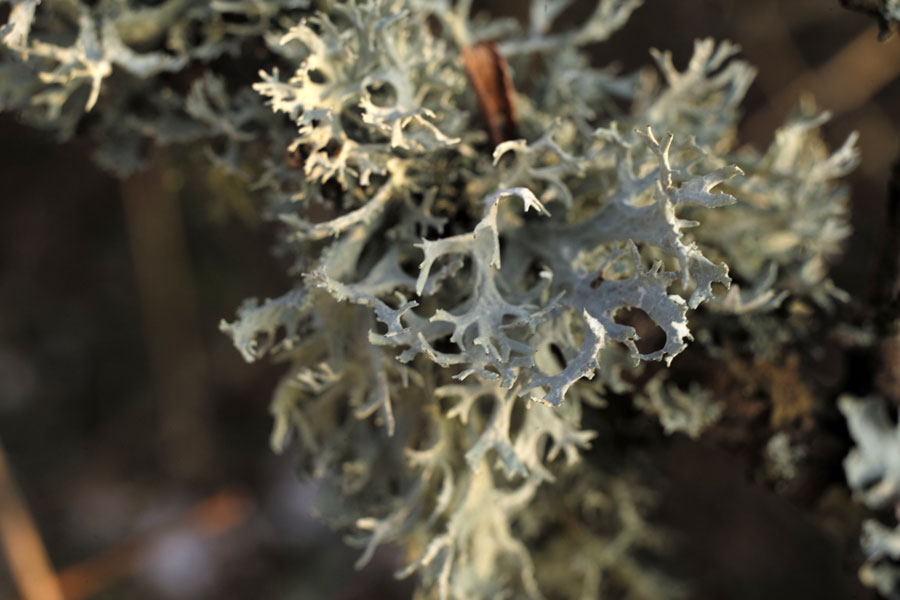 |
 |
|
 |
 |
|
 |
 |
|
 |
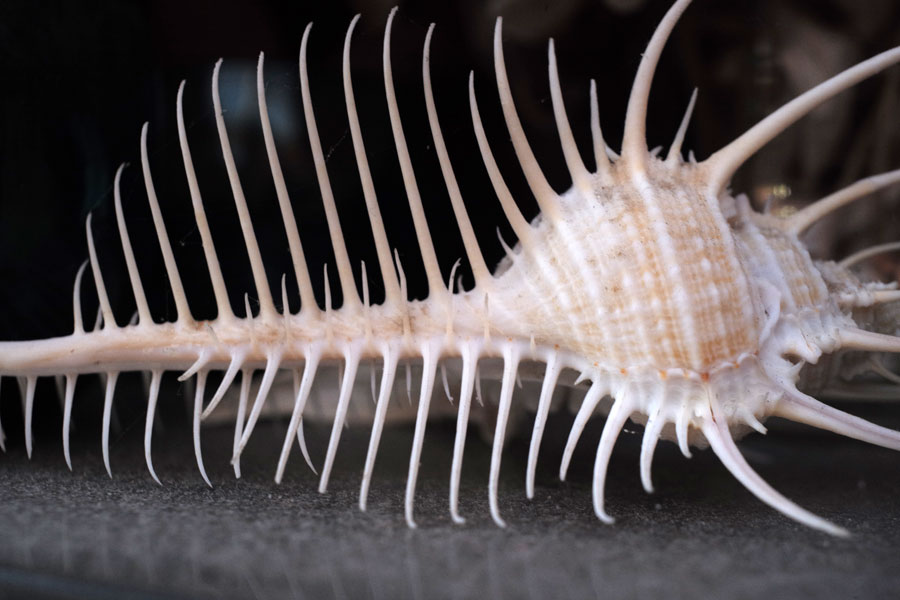 |
|
 |
 |
|
 |
 |
|
 |
 |
|
 |
 |
|
 |
 |
|
 |
 |
|
 |
 |
|
 |
 |
|
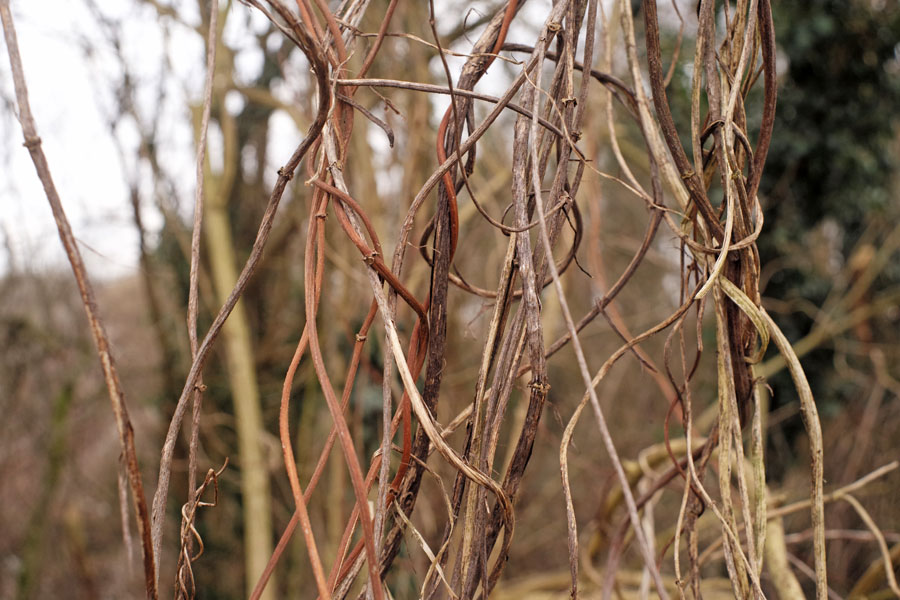 |
||
 |
 |
Close-Up Samples With Fotodiox T-L(M) Adapter (Not Recommended)
I took my very first "quick-and-dirty" shots with the lens using the Fotodiox T-L(M) Adapter, which is not recommended because of the wrong thread pitch; somehow, I managed not to destroy the screw mount with this action. These photos are presented for illustration only. I therefore do not offer the original files. Also note that magnification is higher than with the Novoflex adapter, since this adapter has a longer extension (as a consequence, you cannot focus at larger distances).
*) From the left edge to the right edge without the lid
Conclusions
It looks like I have started an interesting journey with buying this lens. There are also quite a few sample photos on this site that I took with this lens - so see for yourself:
Close-Up Samples - Novoflex Noflexar 35mm f/3.5
There are two things that I can already state:
(1) I will not use this lens as a replacement for my Zeiss Biogon 35 mm f/2.8 because this lens is sharp at longer distances at the center only (it may be useable at f/16...). I still have to carry both lenses with me when I want to use a 35 mm lens and also do close-up shots. Probably, this result is valid only for my special combination of M42 lens, adapter, and camera.
(2) Taking close-up shots with this lens is fun and much easier than using close-up lenses. Adding an extension tube adds some complexity, but allows for more magnification.
The lens is also very prone to flare and creates "sun rings" when wider open. At f/8 and more, this improves considerably.
At the beginning, my only hassle with this lens was that the distance ring was so stiff so that I hated to turn it... And when I turned it in one of the two possible directions, I even loosened the Novoflex M42-to-Leica M adapter, which was annoying. In March 2017, I had the lens repaired in Braunschweig (a friend helped me in this matter), and I got it back at the beginning of April. The distance ring is still a little bit stiff after the repair, but it is nevertheless much better now. And the adapter no longer gets loose when I turn the distance ring. All in all, I am happy with this repair, and the lens is now even more joy to use.
Links
- Help with a Close Focusing 35mm for Leica M240 (thread started by Joshs): www.l-camera-forum.com/topic/267926-help-with-a-close-focusing-35mm-for-leica-m240 - Posting by duckrider: www.l-camera-forum.com/topic/267926-help-with-a-close-focusing-35mm-for-leica-m240/#entry3179287
- Novoflex Noflexar 35mm f/3.5 info sheet (Novoflex): www.macrolenses.de/bilder/Noflexar_Makro_en_02.pdf
- Novoflex Noflexar 1:3,5/35mm (sagafoto.at, in pentaxforums.com): www.pentaxforums.com/userreviews/novoflex-noflexar-f35-35mm.html
- Novoflex Noflexar 35mm f/3.5 Macro (Chloressigsäureethylester, flickr): www.flickr.com/photos/54671350@N02/sets/72157632877252810/
- Die Sammlung Kurt Tauber: Novoflex Noflexar 1:3,5/35 mm (Kurt Tauber): www.kameramuseum.de/2objektive/novoflex/noflexar-3,5-35%20mm.html (in German)
- Das Novoflex System für die Exakta Varex (Photo but More, Horst Neuhaus): photobutmore.de/exakta/objektive/novoflex/ (in German)
- Noflexar 1:3,5/35 (flickr, Alfred): www.flickr.com/photos/alf_sigaro/4291226672 (in German)
| 16.01.2025 |
